Although Jeju Island has too many attractions to enjoy in just two full days, we were able to venture around what is Jeju's most arguably best attraction: Udo Island. Located 3.5 km off the east coast of Jeju, teeny-tiny Udo Island with an area of 6 km sq. (approximately 1/95 of the land area of Oahu) is literally translated to "Cow Island" because it looks like a cow lying down.
We left the hostel early in the morning to take an hour-long cab ride (which amazingly barely cost over $21) to the east coast, where we took a 15-minute ferry to Cheonjinhang Port on the southern tip of the island. We originally intended to rent ATVs and ride around the island, but unfortunately, we were required to have international licenses to operate any vehicles on the island. So instead, we rented bicycles for three hours at the price of $7.
The weather was amazingly warm and sunny, which made biking around the island feel spectacular. 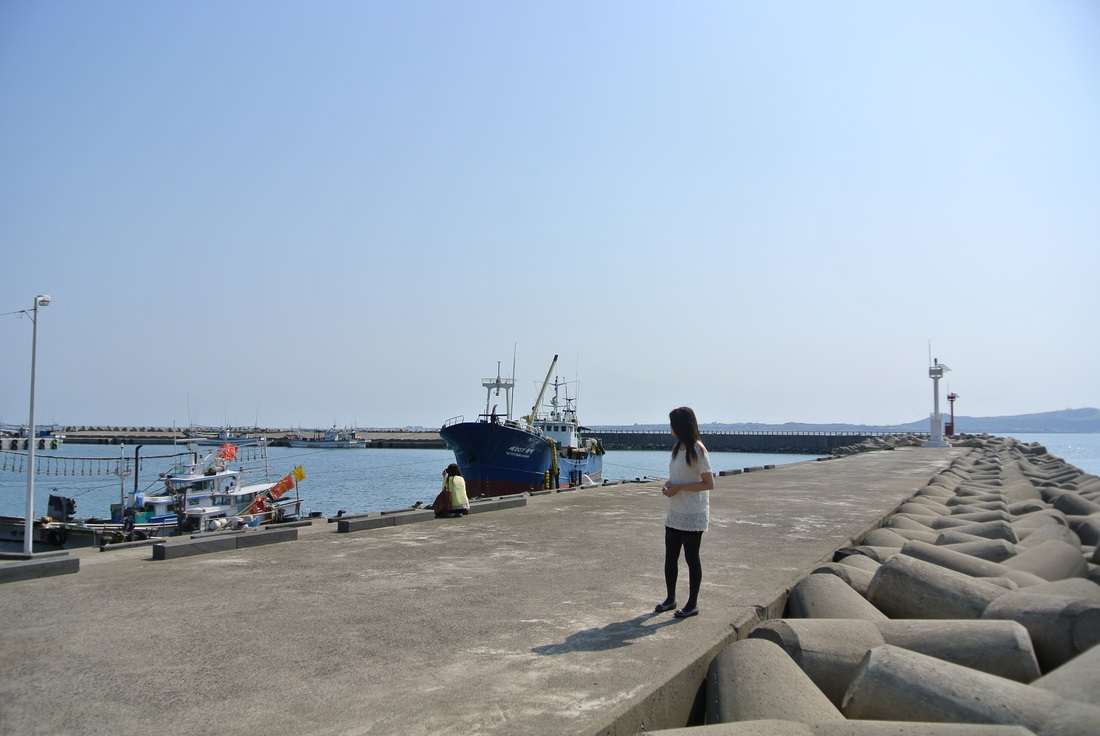 View from the port | 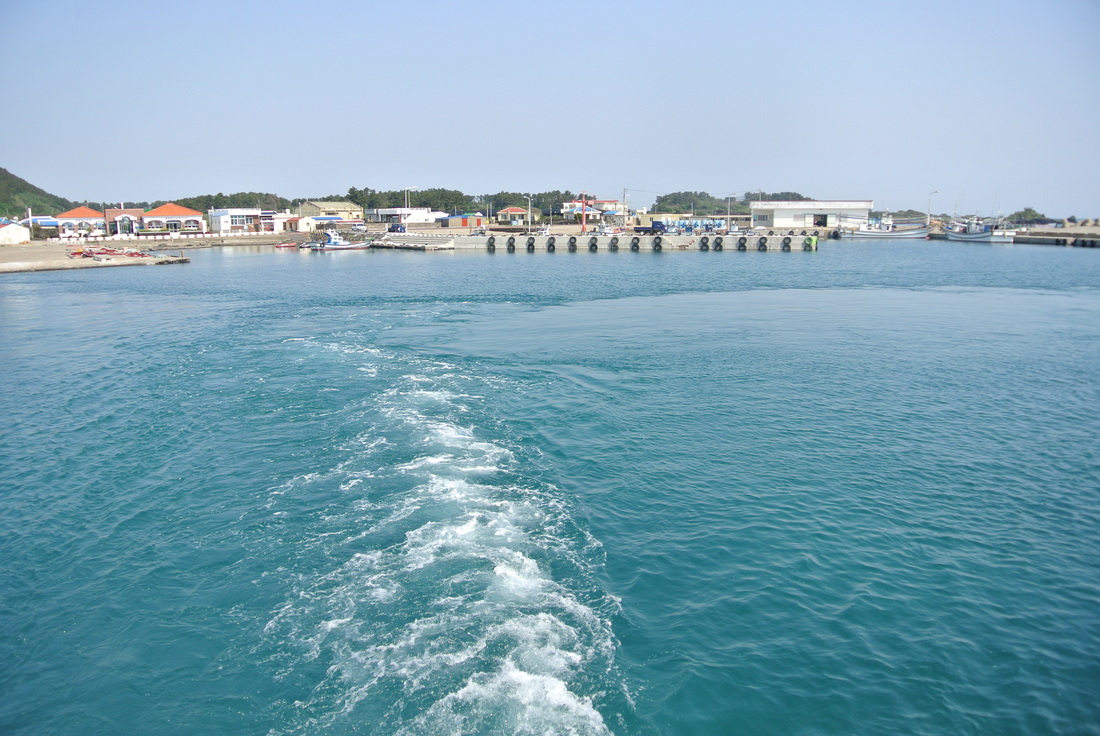 Bye-bye, Jeju! | 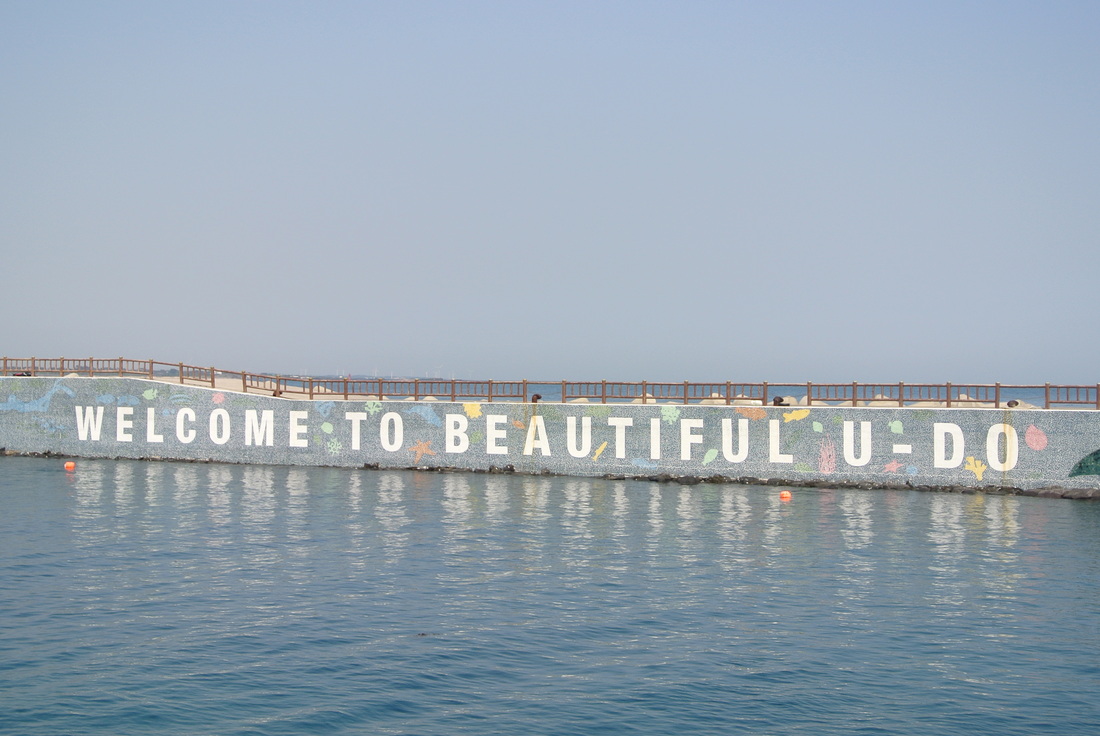 Welcome to Udo! We began to bike clockwise around the island, and like the tourists we were, we decided to stop every three minutes to take pictures: 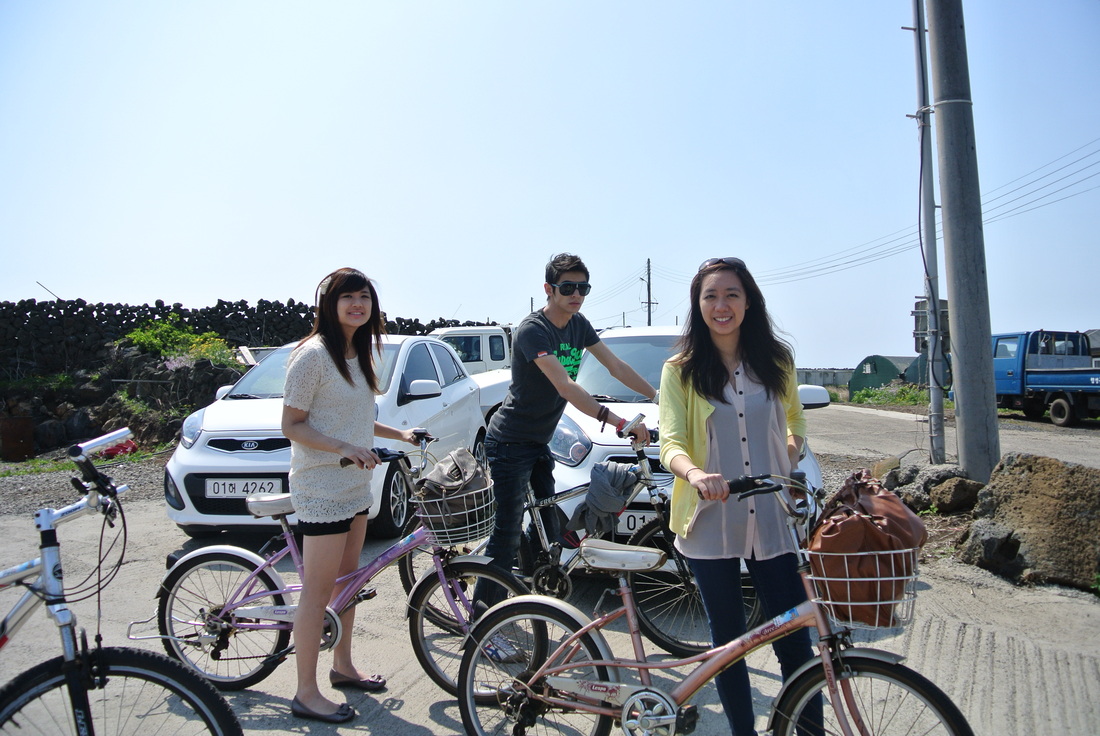 Reaaaaadyyyyy to BIKE! |  Udo Island Peanut Ice Cream | 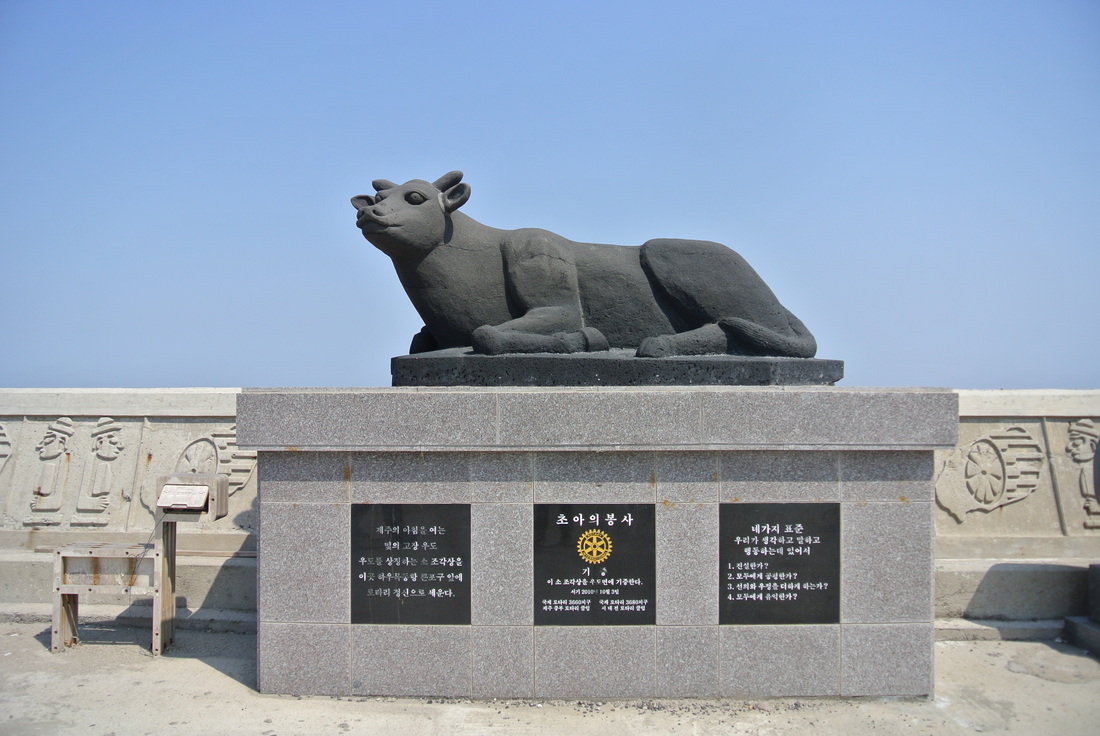 Cow Island | | For lunch we chowed on Hwoe Guksu, which was pretty much Korean noodles mixed with sashimi, vegetables, and gochujang (chili pepper paste). We also had more sashimi (predominantly mackerel) on the side. After our fun-filled day cycling around Udo Island, we ferried back to Jeju Island and headed to Bijarim Forest, which is apparently the world's largest nutmeg forest. We enjoyed the greenery and crisp, fresh air as we wandered aimlessly around the forest, while excessively taking pictures. 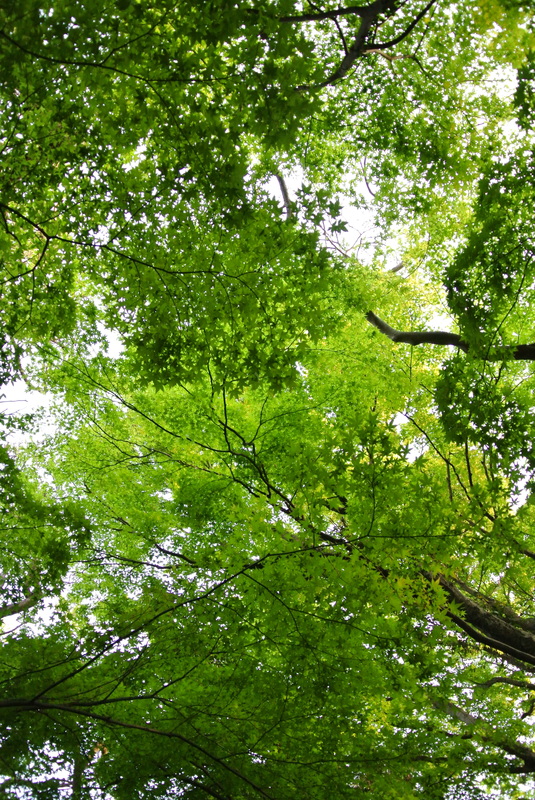 Greeeeeeeeeen (like in Kyoto!) | 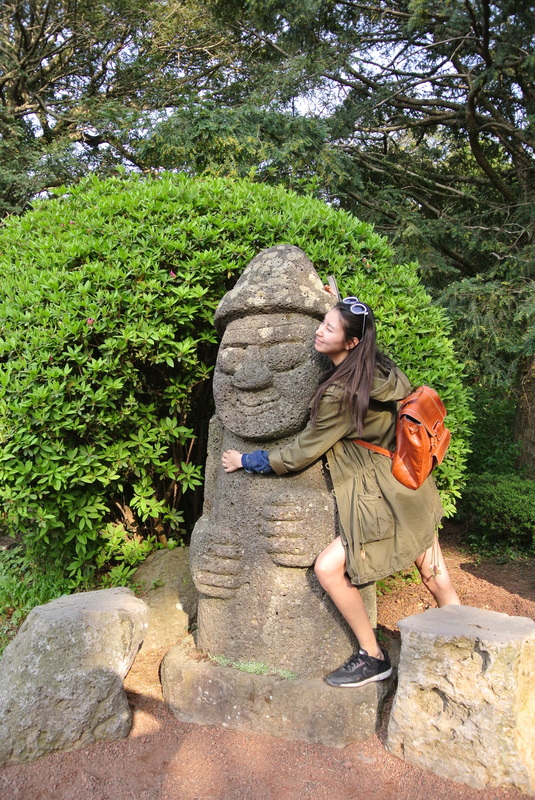 Hug a statue! | We then headed back to Jeju City in search of a restaurant that serves horse. After wandering around without a clue to where we should search, we ran into a mini amusement park which had an insanely dangerous but thrilling ride...and I forgot its name. It's basically a rotating platform bordered by seats facing inward with no seat belts or harnesses to hold riders down. It would violently rotate in either direction, and occasionally bump up and down, sending some of its riders flying into the air, only to land back on the platform (or the seats) with a loud and usually painful thud. Only six of us were brave enough to ride it, and we can all agree on one thing: we all thought we were going to die. Here are some random pictures: 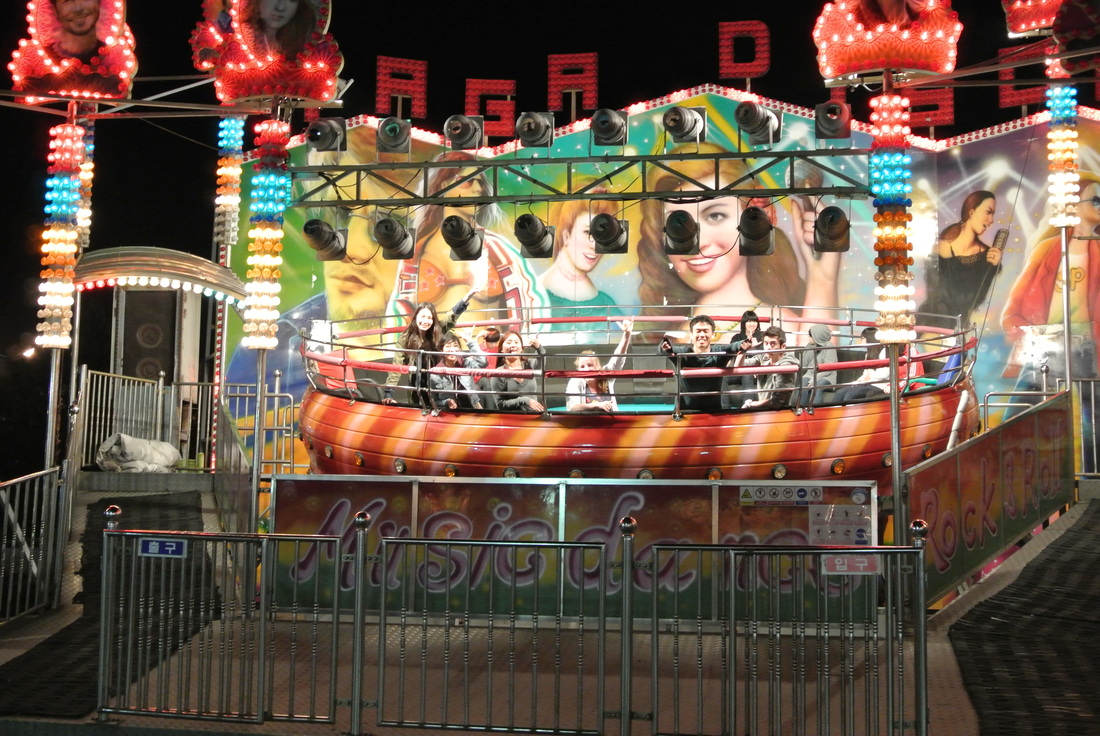 Us shaka-ing before our impending deaths... 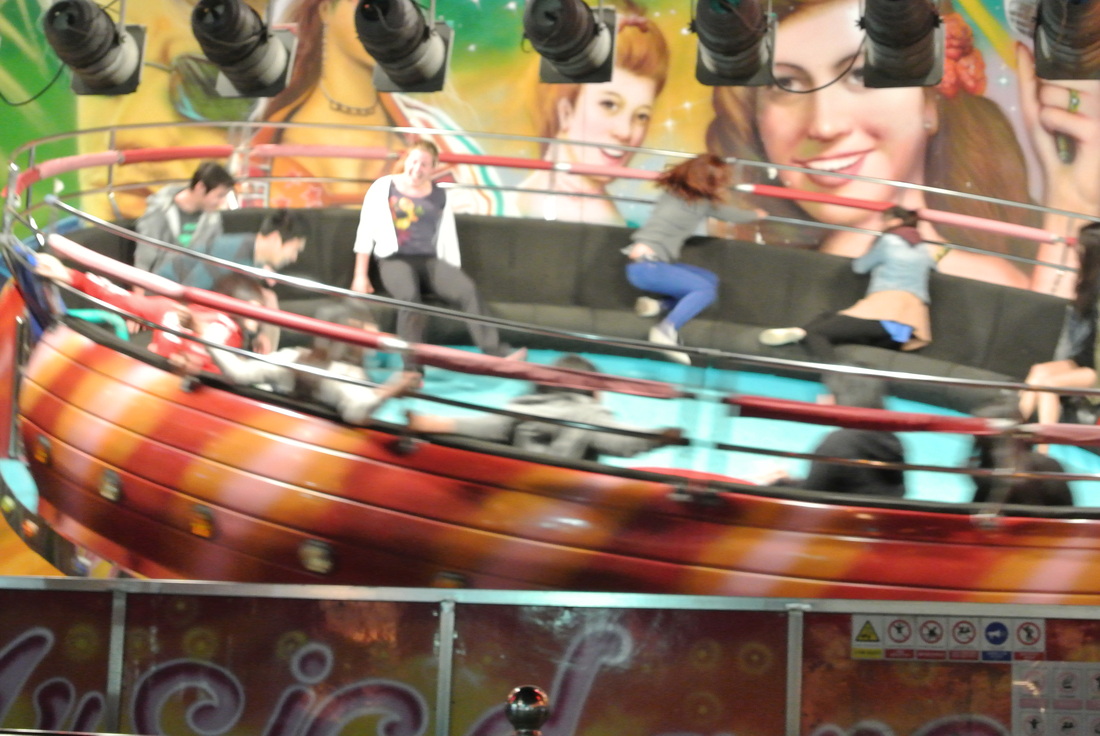 ...then death (look at Julia S. clinging on to her life)... | 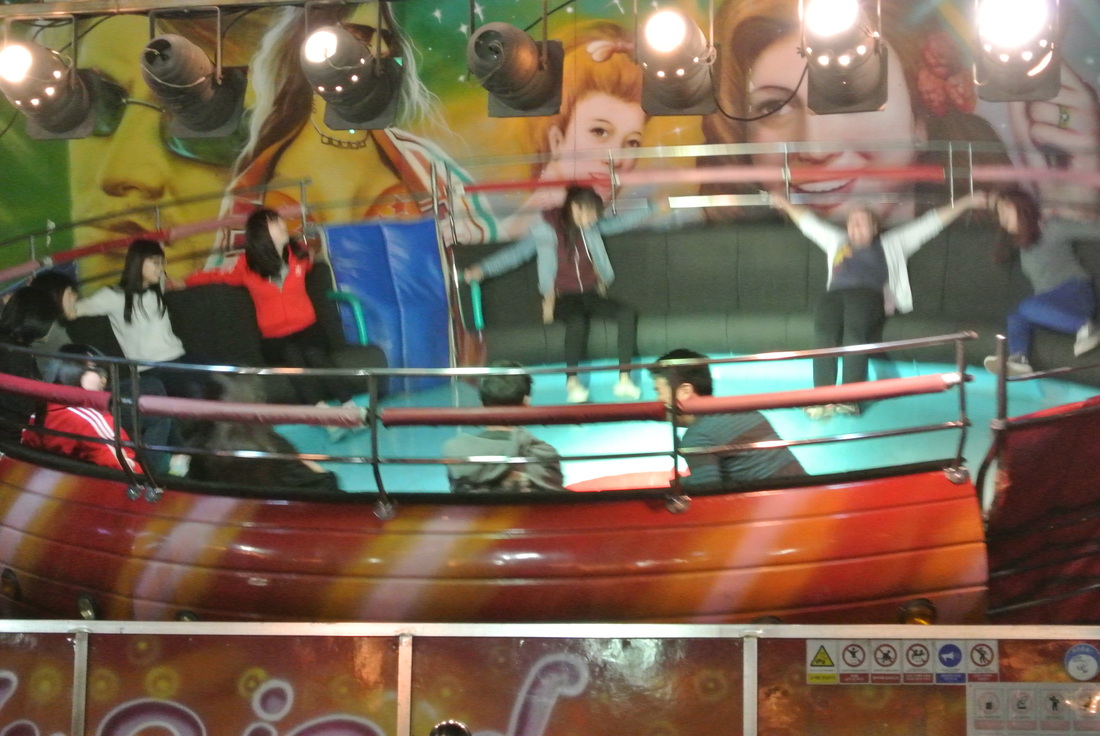 ...and here we can see Sylvia and Julia A. clinging on to their lives as well... | As we later continued our journey to find some horse toe eat, to our detriment, we were directed to a restaurant that happened to just recently took horse off its menu. Nonetheless, we enjoyed a traditional Korean meal for dinner which was, of course, delicious.
The next day, some of us flew back to Seoul as we had classes on Monday. The others who didn't have Monday classes stayed for an extra day and had adventures of their own (you can check their adventures out by sifting through their blogs; the links are on the "Links" page). That's all for my Jeju Vacay...we're planning to have a trip to Busan soon. We'll see if anything interesting happens in between now and then!
Today we set out early to hike Mount Halla, which would turn out to be one of those how-did-I-survive moments.
At 7:00A.M. sharp, the five ladies and I scarfed down eggs and toast to charge up on energy, as we were told that the hike would be over 4 hours long. One of the hostel guests warned us about the wind and how cold it was, and advised us to wear warmer clothes. We, all dressed nonchalantly in summer P.E. clothes, failed to take the man's advice. This would turn out to be our downfall.
The cab ride to Halla-san took about an hour long, but it seemed endless. As soon as the cab left the city, we were completely surrounded by forests, with the mountain slowly revealing its colossal size as we got closer to it. Luckily for us, the cab driver was a bro and gave us his card to call him after we were done.
As soon as we got out of the cab, we realized that the hostel guest's advice should've been taken seriously. My goodness, it was FREEZING (albeit it was a sunny, beautiful day nonetheless!) The ladies ended up buying thermal leggings to warm themselves up, whereas I, the man of the pack, deemed it too unmanly to wear women's leggings, despite the fact that my legs were completely numb after being outside for 7 seconds.
We began our hike, which turned out to be relatively easy. We weaved through the forest path and made our way along a ridge, where we were able to get a breathtaking view of the southern side of the island...where we were barraged with gusts of unbelievably cold wind. It got so bad, that once we hit the midway point, we decided that it would be best to head down. Here's some pics: 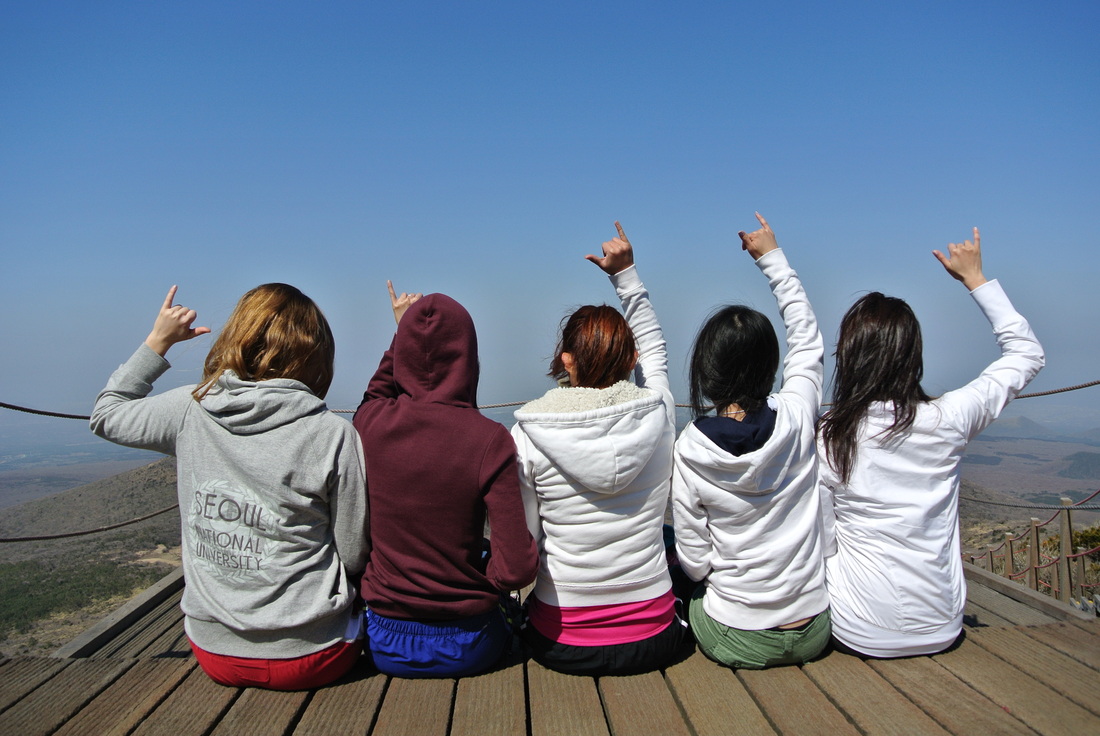 Shaka brah | 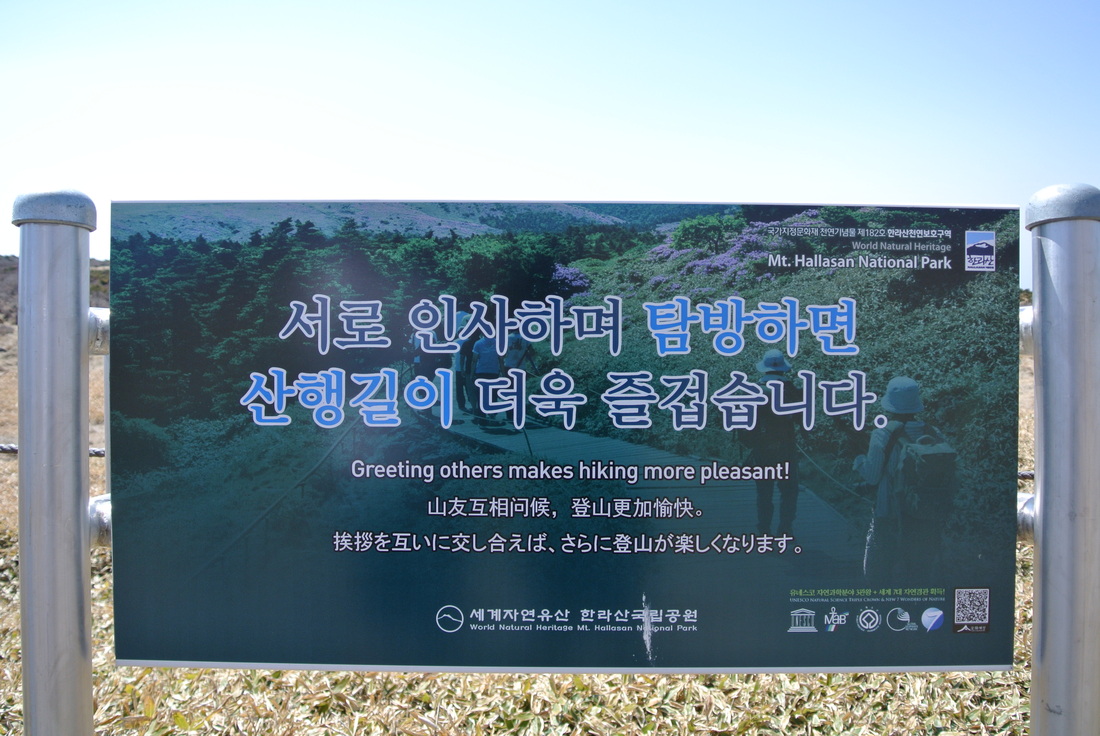 Sound advice for hikers! | 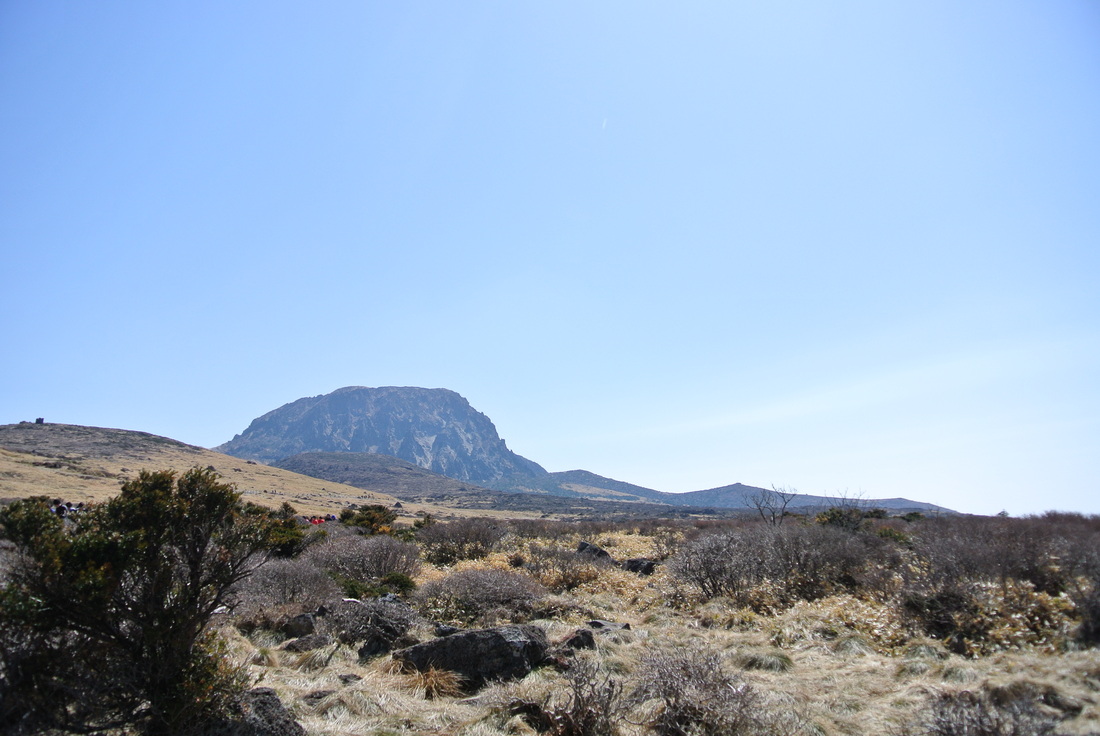 The peak was within our reach... Once we got to the bottom, we cabbed it back to the hostel to change into beachwear. We then visited Hamyang Beach (black sand) and Hamdeok Beach (white sand). Both were very beautiful and quite reminiscent of Hawaii's beaches, although the water was unbearably cold. We ended up venturing around both beaches and took too many pictures. Here are some of the nice ones: 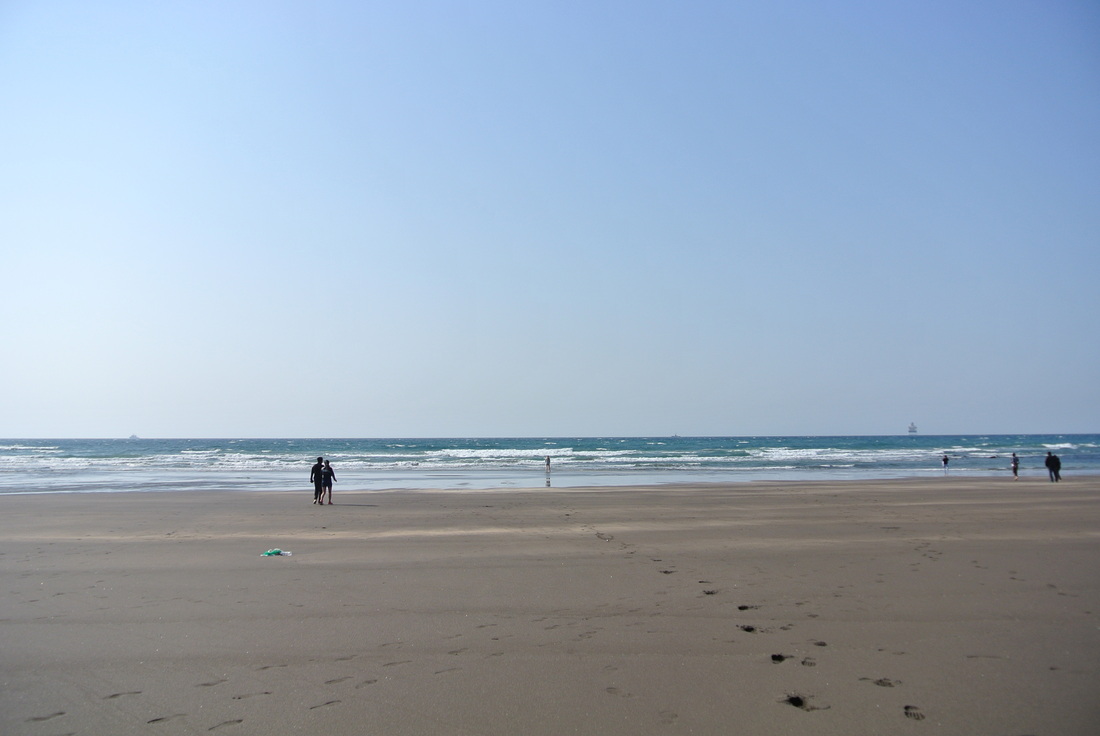 Hamdeok Black Sand Beach 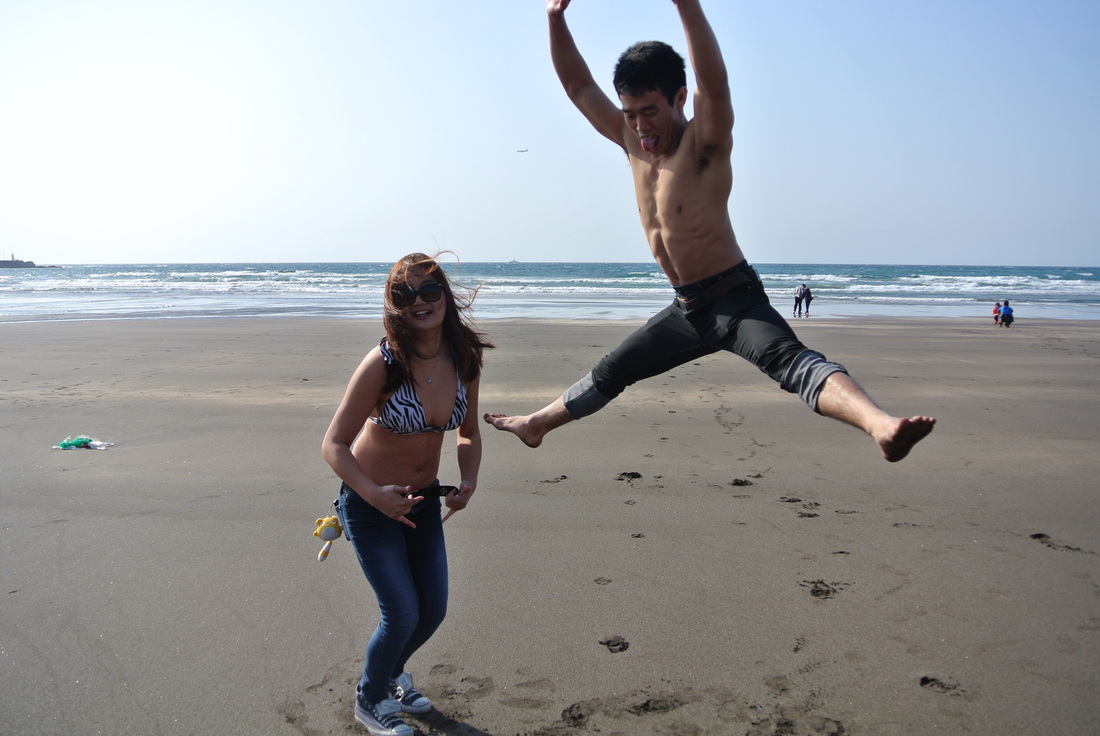 Failed Jumping Picture with Julia | 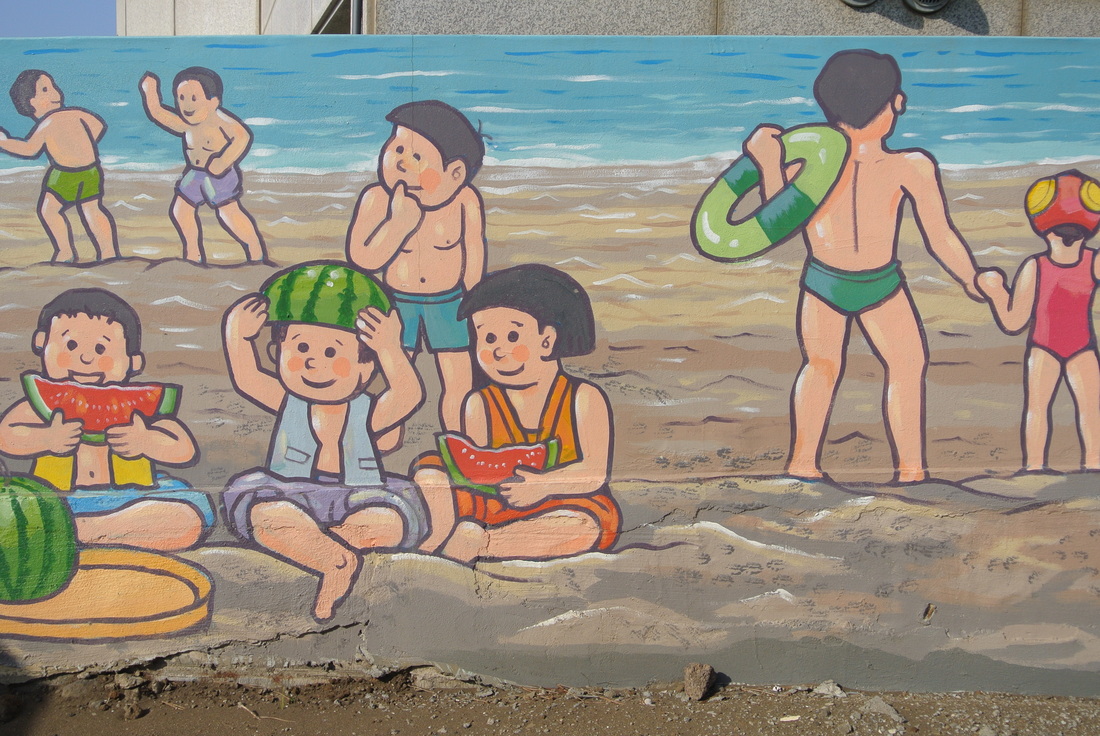 Nice wall art | 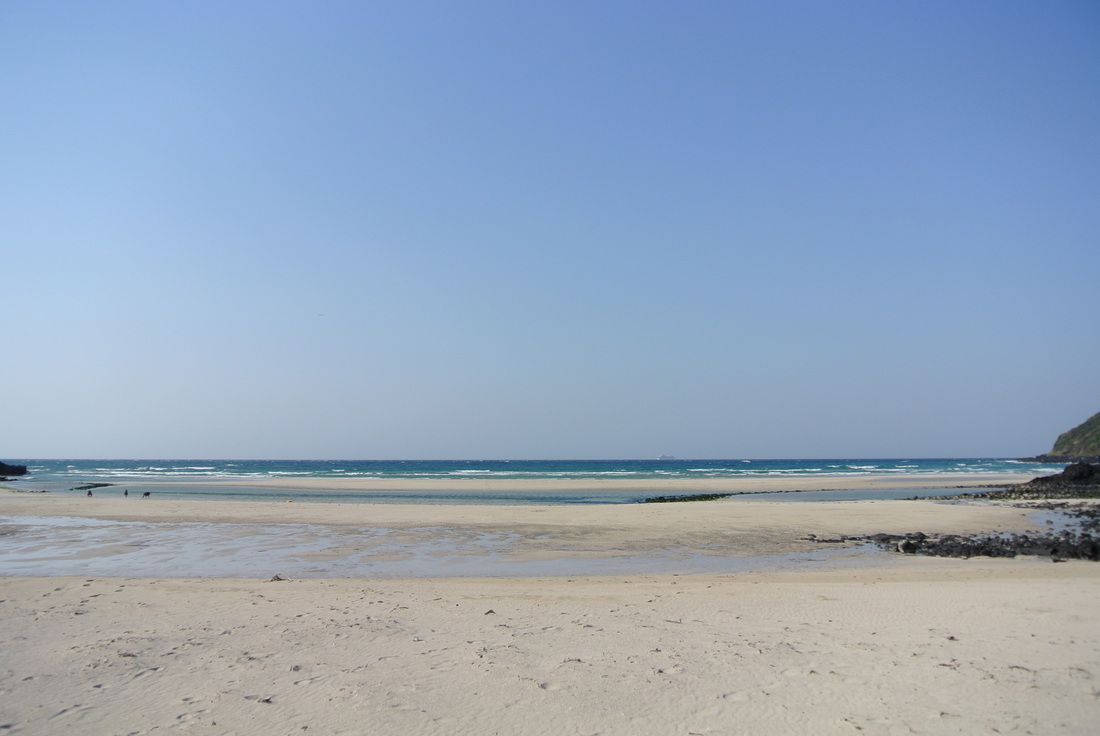 Hamdeok White Sand Beach 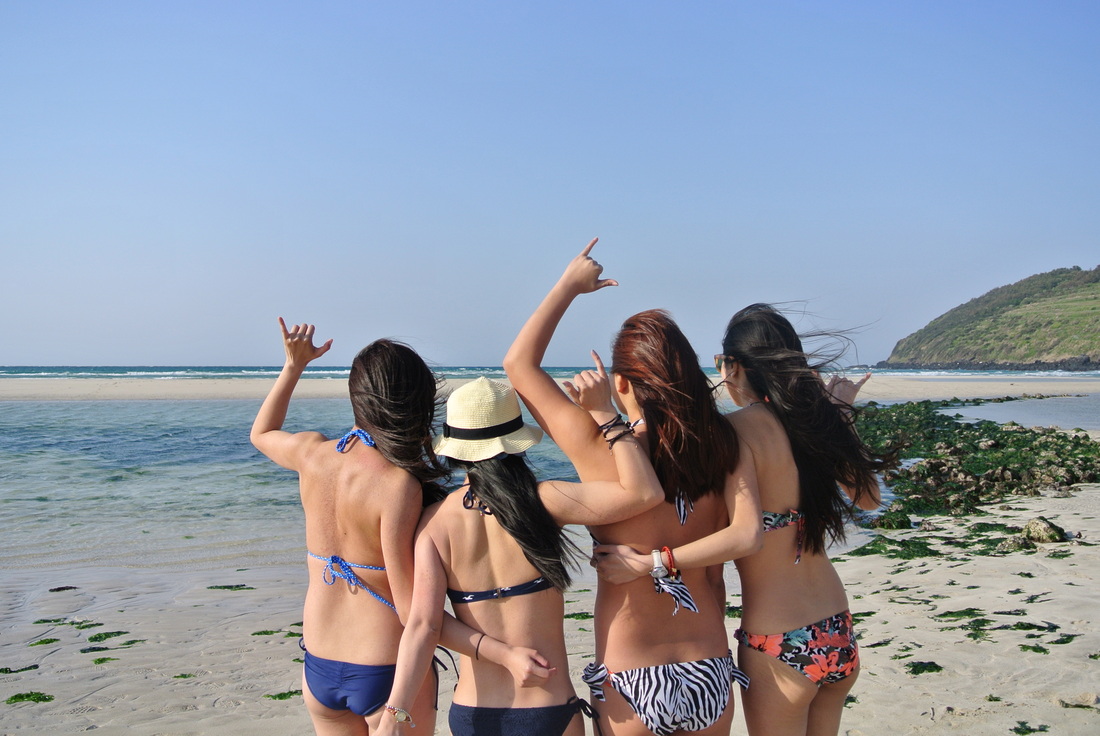 Nice, ladies! | 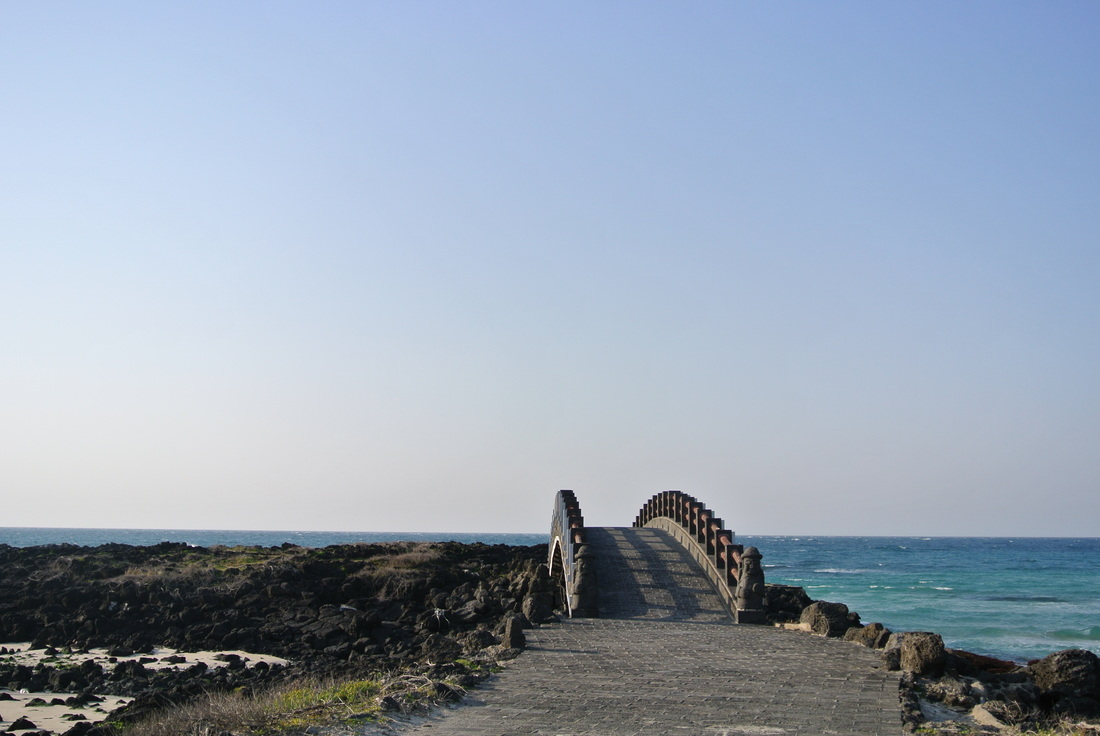 A petite bridge | Two more friends flew in this morning and ended up meeting us at Hamdeok beach (so now, I'm not the only guy). After cruising in a seaside cafe, we headed back to town for dinner where we feasted on Jeju's delicious fish. The fish was as fresh as fresh can be, as we literally witnessed them being killed right before us. Of course, fresh fish is always delicious, but only one item on the assorted sashimi platter was pretty much inedible... It was the sea pineapple, known in Korea as meongge (the reddish thing on the top right side of the platter). It was bitter and had a taste that was quite indescribable (in a bad way). However, I must say, the grilled mackerel was bomb.com: 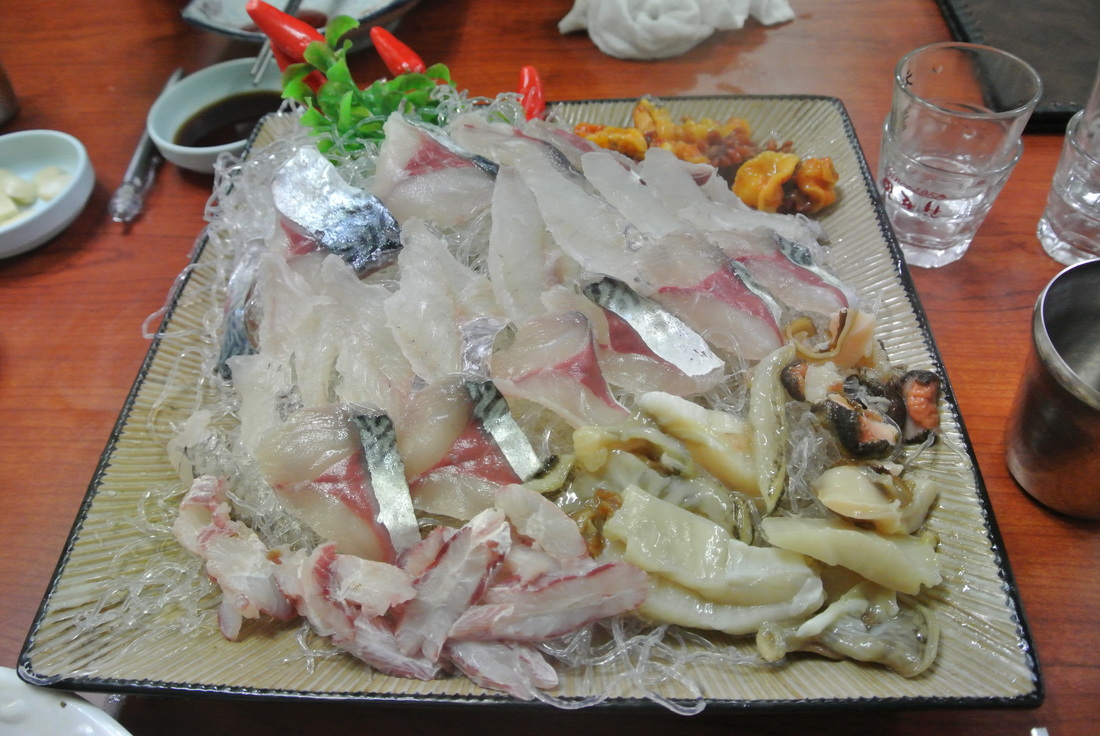 Assorted Sashimi | 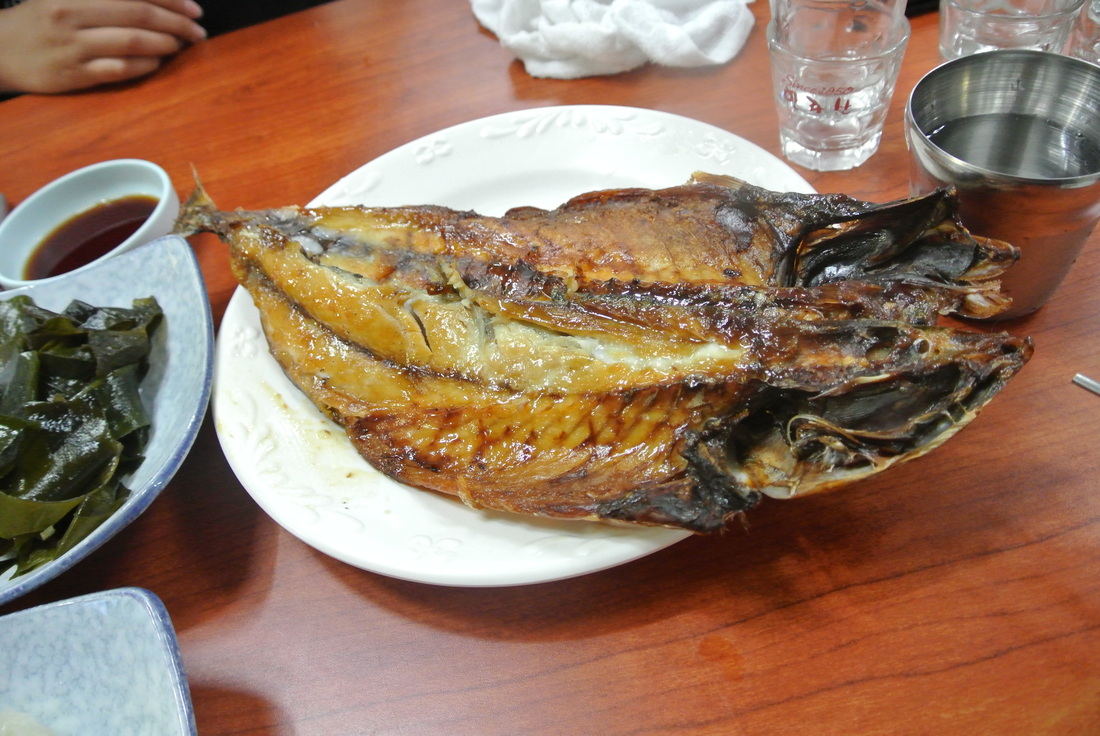 Grilled Mackerel | Tomorrow, we plan to venture to the easternmost part of the island to take a ferry to Udo Island. Lookin' forward to it!
City life ain't easy. Maybe not as much as Tokyo, but Seoul is dense in population. The city never sleeps. It seems like daily life is so congested with too much action, and as each day progresses by, the need for a breath of fresh air slowly creeps in. But that all gets thwarted by Seoul's poor air quality. Thus, to escape this wonderful-but-tiring city, with great company, I booked tickets to Jeju Island. Jeju Island, lying south of South Korea in the Korean Strait, is a volcanic island currently self-governed by the local government, headquartered in Jeju City, located on the north of the island. Mount Halla, which dominates in the center of the island, is primary volcanic island of Jeju. It is a UNESCO World Heritage site, with a beautiful crater lake at the peak of the mountain. Jeju has been described as "Seoul's Hawaii." The tropical and laid-back feel of the island was definitely similar to Hawaii; however, unlike Hawaii, Jeju experiences four seasons throughout the year. A total of 8 people traveled to Jeju with me to enjoy a weekend of island fun. However, due to class scheduling, we all departed at separate times. For the flight there, I traveled with Mandy and Sylvia via Eastar Jet (a low-cost but pretty reliable airlines). The first thought that came to my mind after our hour flight was, "IT'S COLD AND WINDY!" Yes, it was cold and windy, with a hint of overcast. Our hostel, a 10-minute drive from the airport, offered airpot pick-up service. Rainbow in Jeju, the hostel we stayed at, was amazing. For about $22 per night with comfy beds, towels provided, guitars to jam on, and cook-yourself breakfasts provided, I'd suggest it to anyone headed to Jeju.
The first night, Mandy, Sylvia, and I headed to Jeju Love Land, an outdoor museum all about "adult matters." Needless to say, it would be bad if I posted photos and talked too much about it... But it was definitely fun, hilarious, and even disturbing at times. A must-go for couples and those who find humor in such odd subjects. Later that night, three other lady friends from SNU arrived at the hostel. Don't worry, another dude is scheduled to arrive tomorrow...of course, with another lady. Nonetheless, a great gender ratio.
Stay tuned for tomorrow's planned Friday adventures at Halla-san and Jeju's famous beaches!
I hate midterms. Midterms are stressful, take up time, and cause a uncanny dissatisfaction in life once completed. Yes, I hate midterms. I'm one of those students who does adequately on midterms and murders finals. Maybe it's because I set aside studying for midterms because I know that I have the rest of the semester to buffer for that A, or maybe it's because I'm not used to the structuring and format of each professor's exam. Or, maybe it's the pressure to make it or break it during finals that helps me do so well when it's do-or-die. Either way, midterms aren't fun. Having two in one day isn't fun either. Out of four classes, I have three midterms, as my 4th-year level Chinese Economy class bases its grading on essays and presentations. But the two midterms today were for Marketing Management and Financial Management. And boy, they did kick my butt. It made me re-realize that I'm attending Korea's most prestigious and coveted school, and that the difficulty of most courses would be much harder than UH Manoa. Nonetheless, I do have confidence in my performance in Marketing, but Finance was a little tricky. We'll see what happens. According to fellow Freeman Scholar Kayla Nip, Yonsei University had a designated midterm week, just for the sake of taking exams. SNU? Nope, two today, and one right after my planned Jeju trip. After recapping on what I need to do in school for the rest of the semester, I realized that 4 presentations, 2 final exams, 3 case studies, and 2 essays are all due within a three week time period. That will be fun...but for now, I'll wait until this Thursday, as I'll be able to get a breather from this city and relax my Seoul in Jeju Island.
Day two in Japan was spent visiting Osaka Castle (大阪城) and Southern Osaka's shopping districts Namba (なんば) and Shinsaibashi (心斎橋) in Osaka Prefecture.
It turned out to be a rainy day, but nonetheless a beautiful, warm day. The gray sky gave the sakura blossoms a different feel and color, and despite slight winds and a constant, light drizzle, I was able to walk around all day and night in nothing but pair of jeans and a t-shirt. Heck yes.
As most of my other friends already visited Osaka Castle the day prior to my arrival, one other bro by the name of Kenny, who hadn't visited the castle yet, joined me to visit one of Japan's most historically rich sites.
| 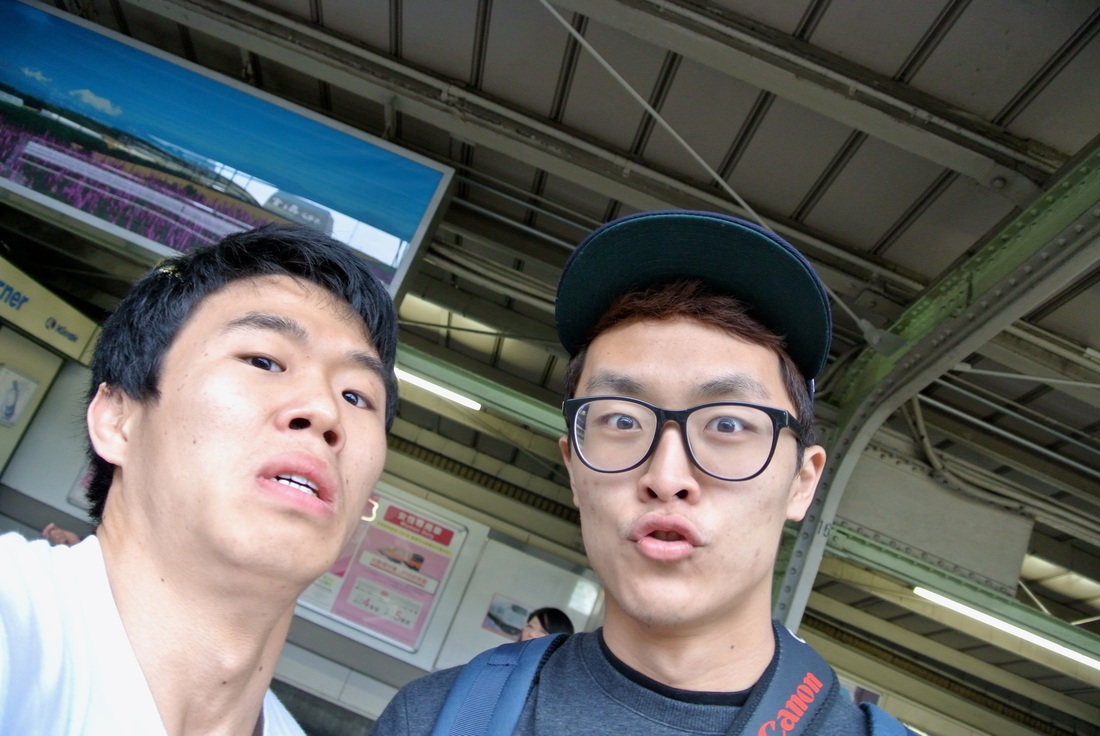 Delicious. | | During the 15th and 16th century (essentially the Sengoku Period [戦国時代], lit. "Warring States Period"), many castles were built in strategic locations to act as bases and fortresses. Many of these phenomenal structures were destroyed during the Meiji Restoration, as an act to destroy more than 2,000 castles was implemented during the Abolition of the Han System in 1871. As such, very few castles remain in Japan; there are only seven left in the Kansai Region.
Osaka Castle was built in 1583 under Toyotomi Hideyoshi (regarded as Japan's second "great unifier," or simply put, Japan's second version of King Kamehameha) to serve as his base. It was eventually captured by Tokugawa Ieyasu (the eventual Shogun of Japan with a shogunate lineage that lasted until the Meji Restoration in the mid-1800s) in the Seige of Osaka in 1615. Eventually in 1868, the castle was captured by imperial loyalists, who turned the ownership of the castle to the Meiji Government. At this time, much of the castle was sadly burned due to civic conflict. The castle then went through phases of rebuilding and destruction (restoration in 1928, bomb raids during WW2, restoration in 1995-97).
My first thoughts after laying my eyes on it was something like, "B-b-b-b-b-beautiful." During the 1995-1997 restoration, the interior of the castle was redesigned to function as a museum. Thus, lighting, elevators, TV screens, displays, and bathrooms with those amazing Japanese toilets were built into the castle. 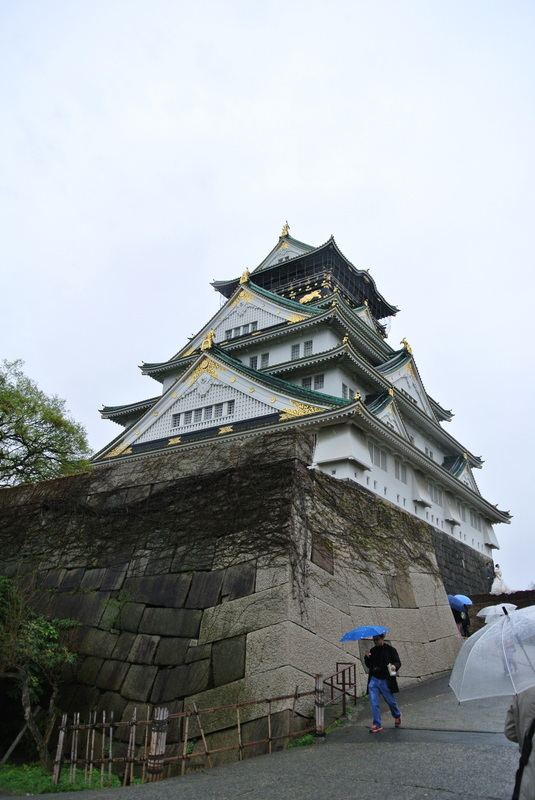 Another view of the castle | 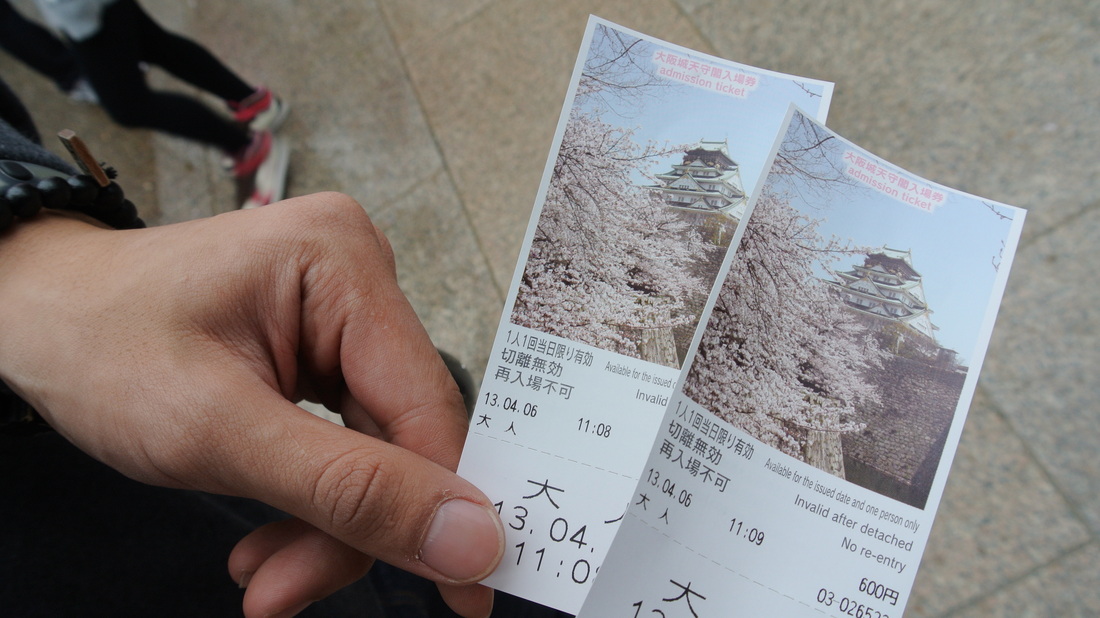 600 Yen tickets 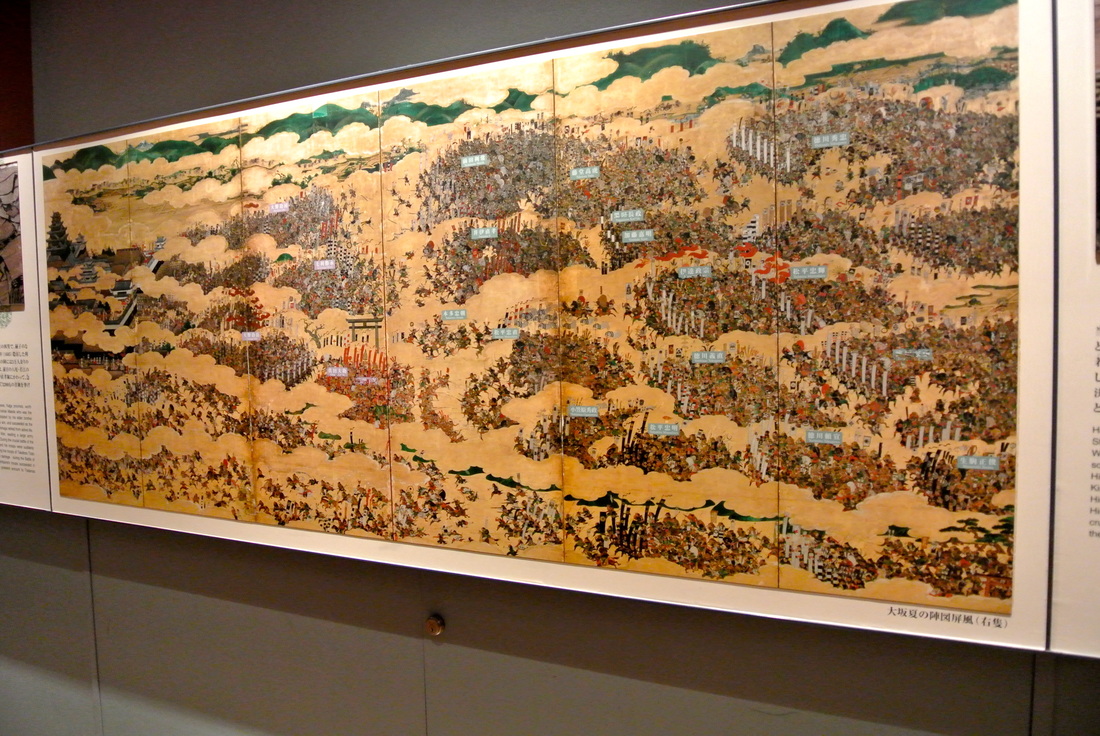 Display of the Battle of Sekigahara | The top floor served as an observatory, where you could experience a 360 degrees skyline of Osaka, albeit not as high as Umeda Sky Building (which we didn't get the chance to visit).
The castle is surrounded by a beautiful park, lined by blossoming Sakura trees. An easy morning stroll around the park is a definite must for those who enjoy clean air, peaceful scenery, and the chance to relax. The photo on the top of the blog page was taken in Osaka Castle Park this very day. Nikon J1, baby. 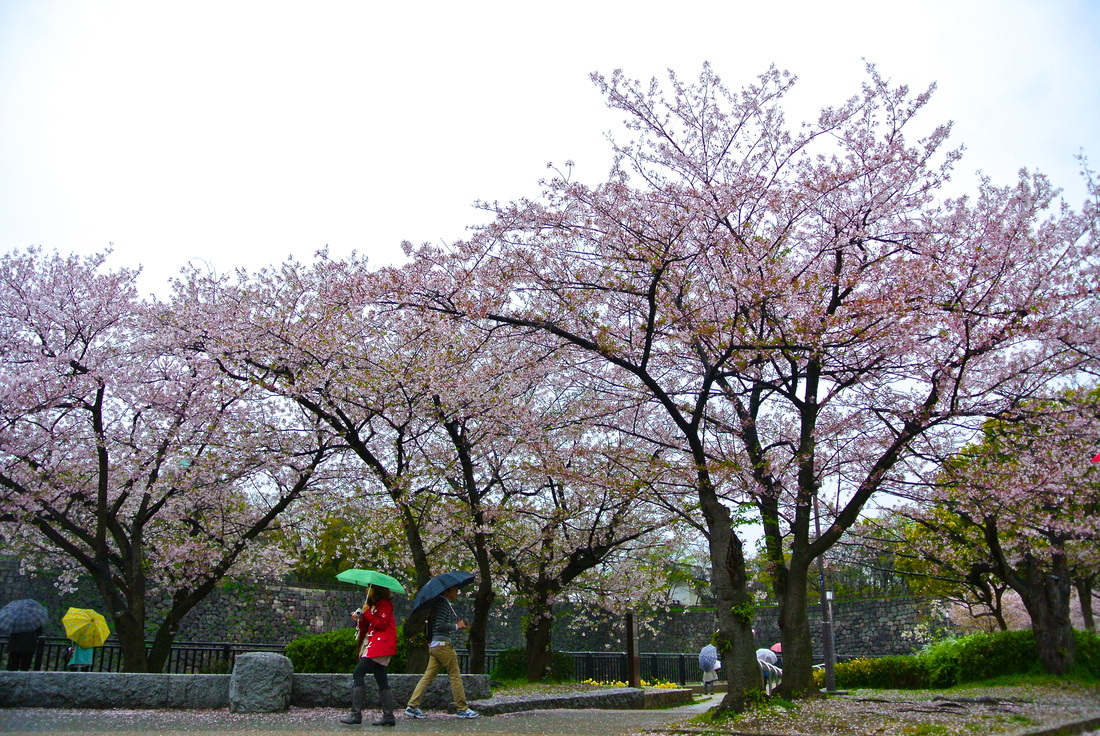 It rained water and petals that day... 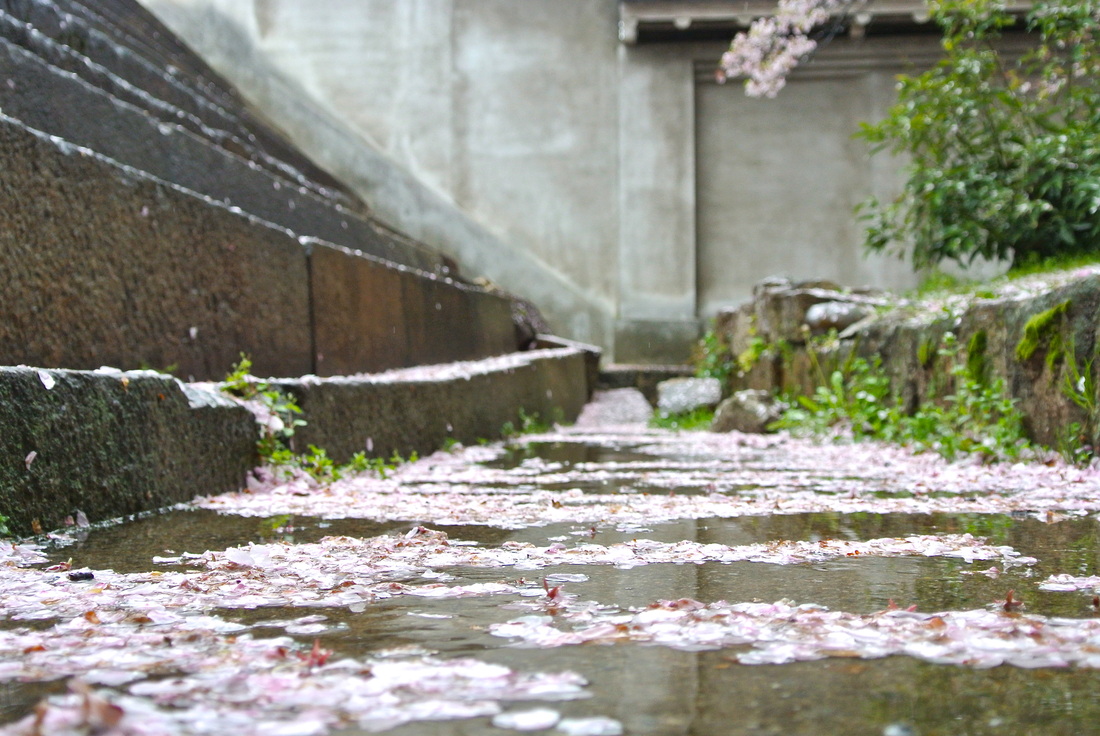 Pink Snow | 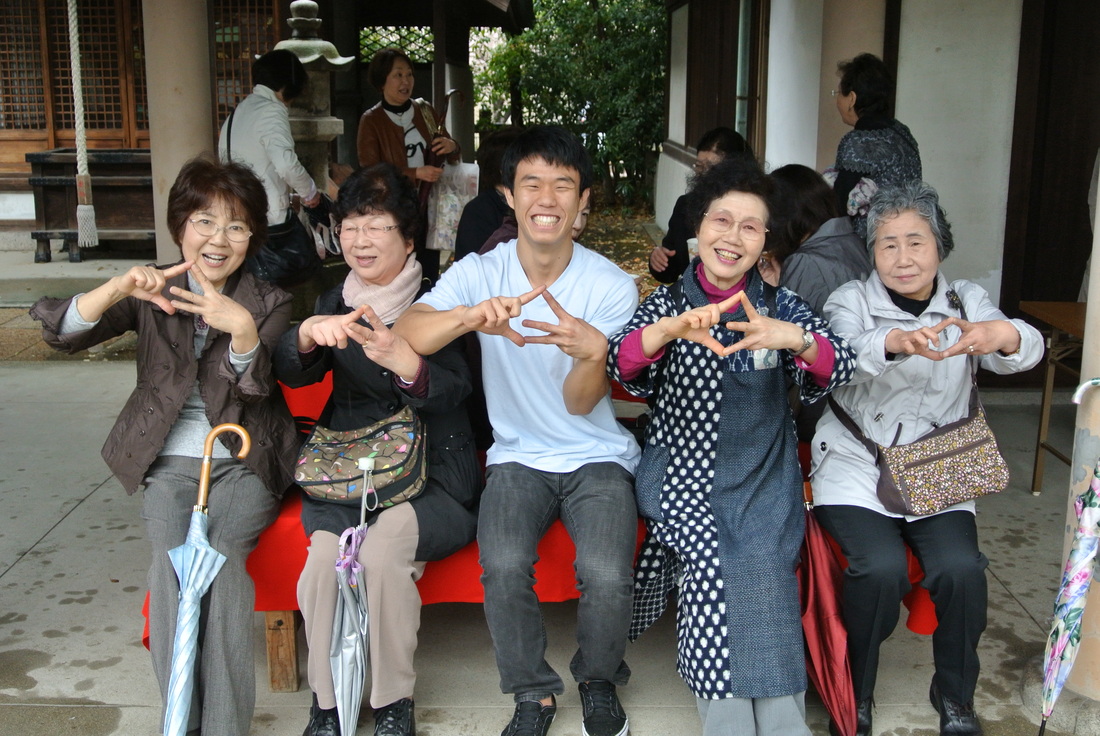 Throwing the BEST sign (although incorrectly) with the ladies | For lunch, we followed the ladies in the BEST sign picture to an underground mall with many restaurants and shops. We went to an "omu-rice" restaurant. (Omu-rice is essentially fried rice, usually cooked with mushrooms, onions, chicken, ketchup, and auxiliary spices and seasonings, wrapped in scrambled eggs, with more ketchup squeezed on top. It's delicious!)
After, in attempt to join our group of friends who spent the day shopping, we headed towards Namba and Shinsaibashi, South Osaka's main shopping districts. There were many stores that sold anything and everything including clothing, accessories, make-up, skincare, and much more. There were grocery stores, bookstores, arcades, and many restaurants as well.
Nearby, there is a place called America-mura (アメリカ村), literally meaning America Town. There were many shops and stores that had the theme of being modeled off of 'America.' Didn't do any shopping, but at least we witnessed a proposal which turned out to be a success. 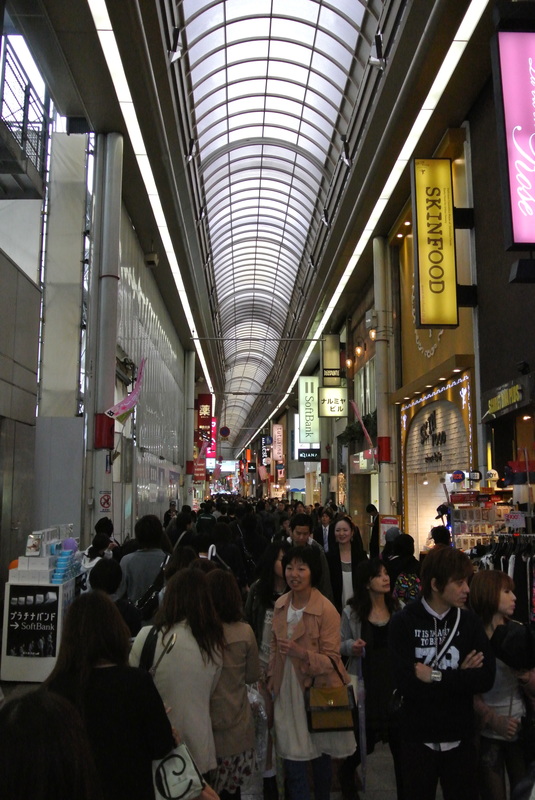 Shinsaibashi | 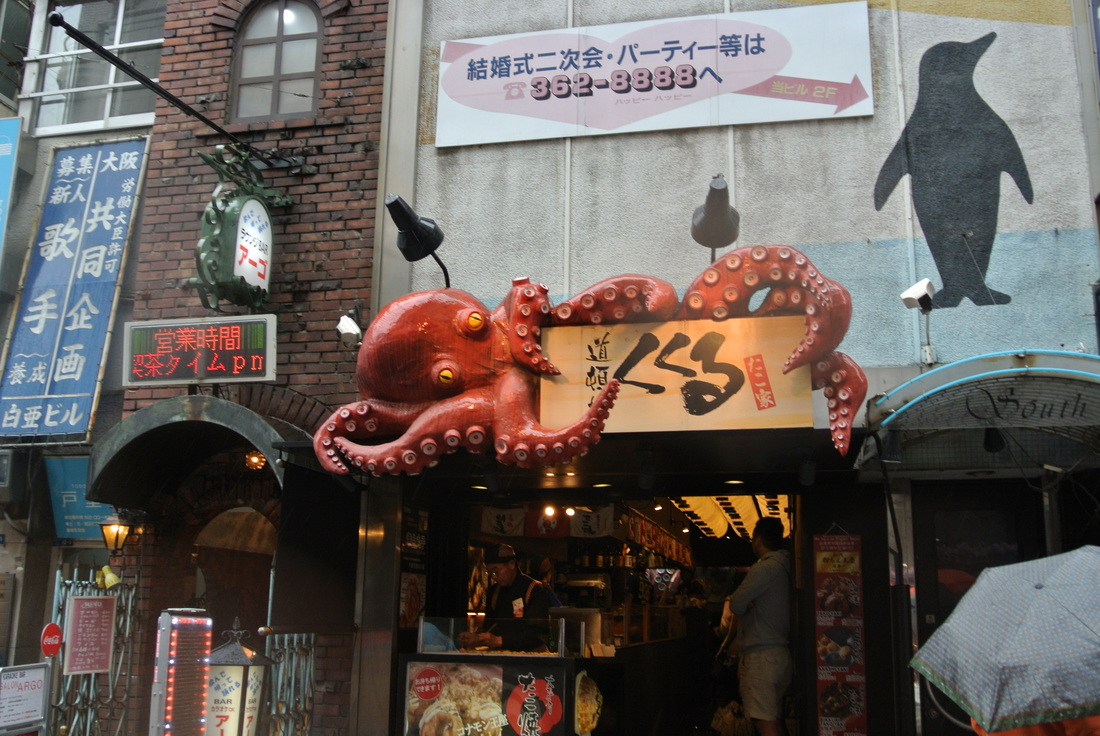 Mmmmm looks good... 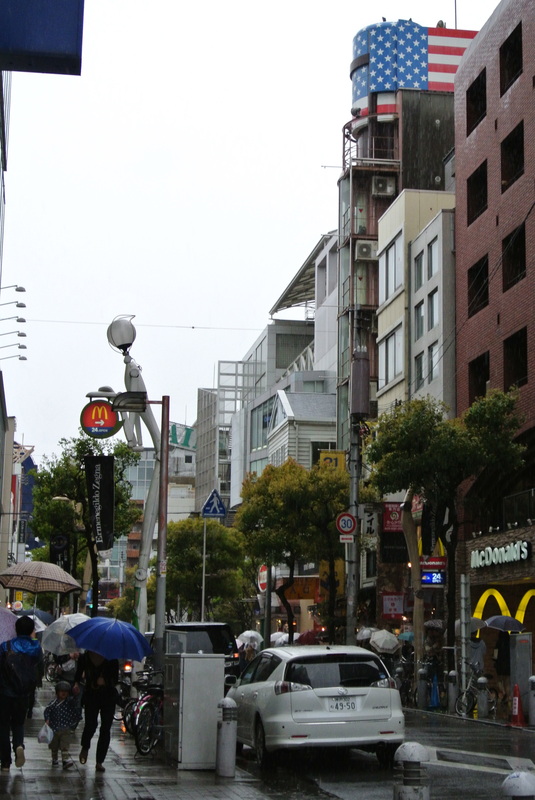 America-mura | We eventually gave up on meeting up with our friends and decided to head to the hotel and rest up, as we were planning to go out and experience Osaka's night life. However, one of our friends had accidentally used the wrong contact lens fluid; her eyes hurt so bad that she ended up going to the hospital. In the end, she was given medication, and we all went back to the hotel and enjoyed each others company for the night.
We grabbed a late night bite at an Izakaya that was conveniently right next to the hotel. This was my first time experiencing Kansai's sashimi, and BRAH it was 'ono. We feasted on various sashimis, including salmon, mackerel, white trevally, and hamachi to name a few. We also ate various tempuras and enjoyed a serving of karaage. It was a great meal. 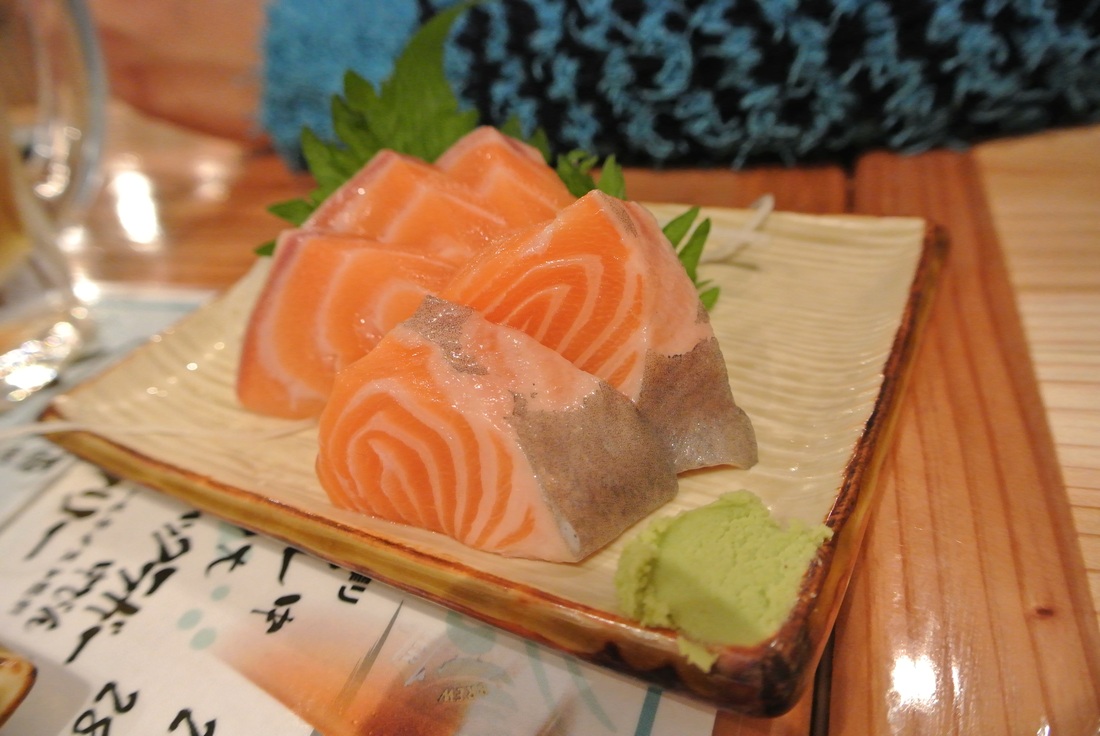 Shake (Salmon) | 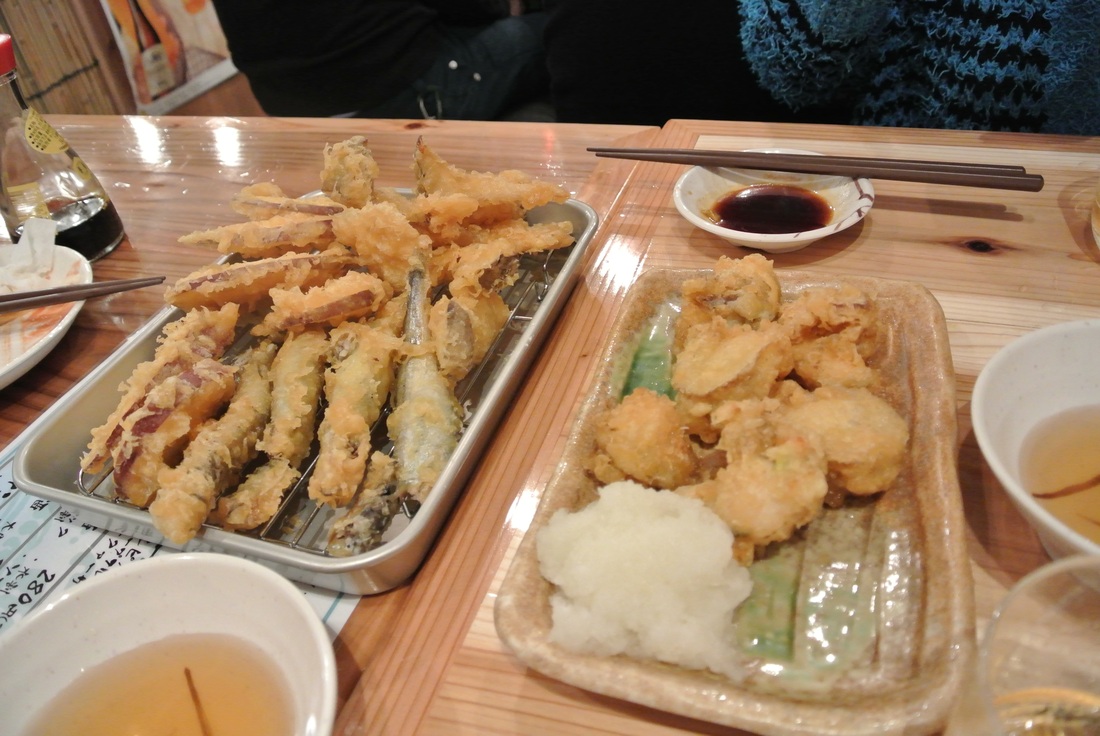 Tempura! (Shishamo was the best) | The next day, Sunday (4/7), I woke up early and caught the train back to KIX, where I boarded my early afternoon flight back to ICN, Seoul. My experiences in Kansai was absolutely magnificent; I will definitely go back to re-experience the beautiful temples and sites, and to explore what else Osaka and Kyoto have to offer. It is a must-go destination for anybody and everybody, as they will not be disappointed by the culture, food, and scenery that Osaka and Kyoto have to offer.
This concludes my blogging on my trip to Japan. Stay tuned for future posts on my experiences in Jeju Island!
| 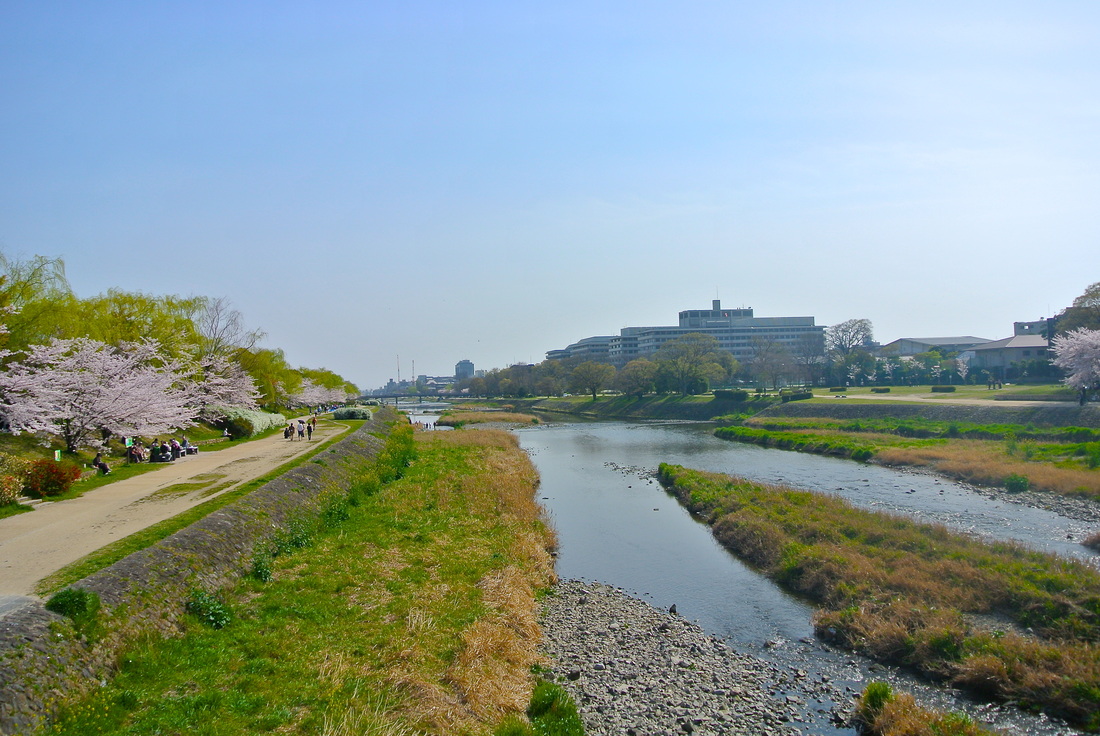 Kamo River (鴨川) | | After Fushimi Inari Shrine, we made our way to East Kyoto to visit Kyoto Imperial Palace (京都御所, Kyoto Gosho). It happened to be open for only four days during this season (April 4th to the 7th). You could say that we were blessed with great timing (and weather, free entrance fee, and the opportunity to see Japanese royalties' cribs).
Kyoto Gosho was once the home of Japan's Shogun (i.e. Emperor; Tokugawa Ieyasu) until 1869, when it was moved to Tokyo during the Meiji Restoration. The palace was ordered to be preserved in 1877, and to this day it stands as one of Kyoto's many beautiful architectural and historical sites.
Outside of the palace was a beautiful park saturated with cherry blossoms of every hue of pink and white. There were playgrounds for children to play and grass fields for people to sleep; a very relaxed atmosphere where everyone can enjoy a calm, warm afternoon. 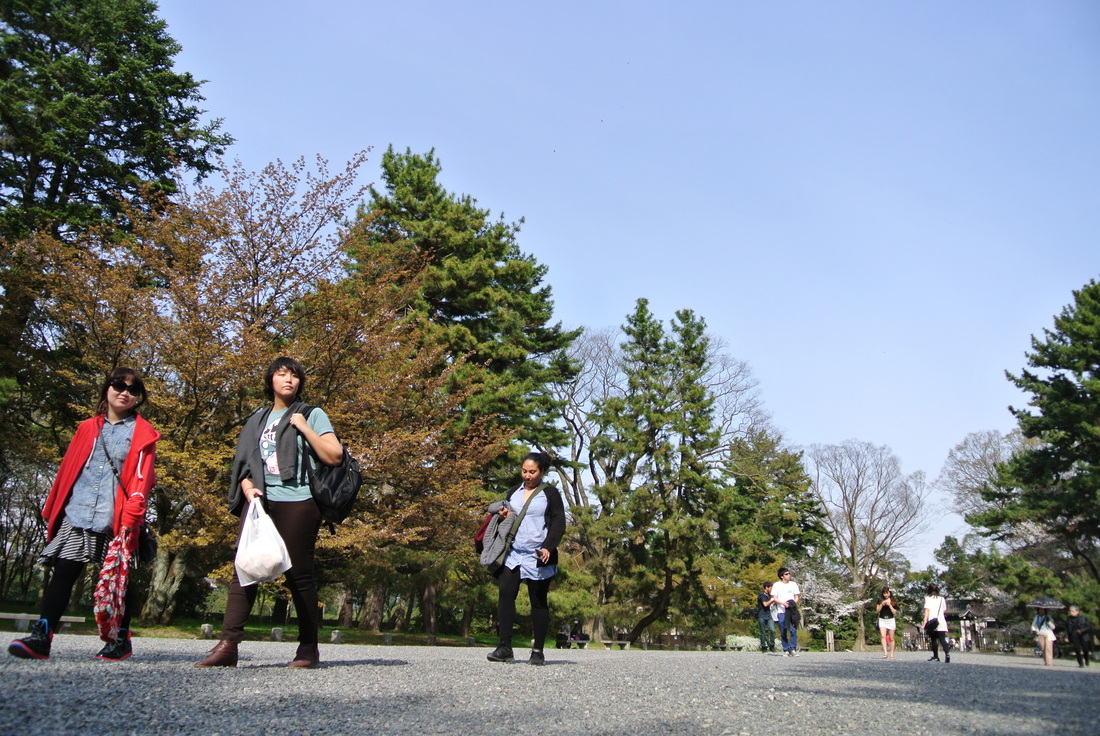 Outside of the palace 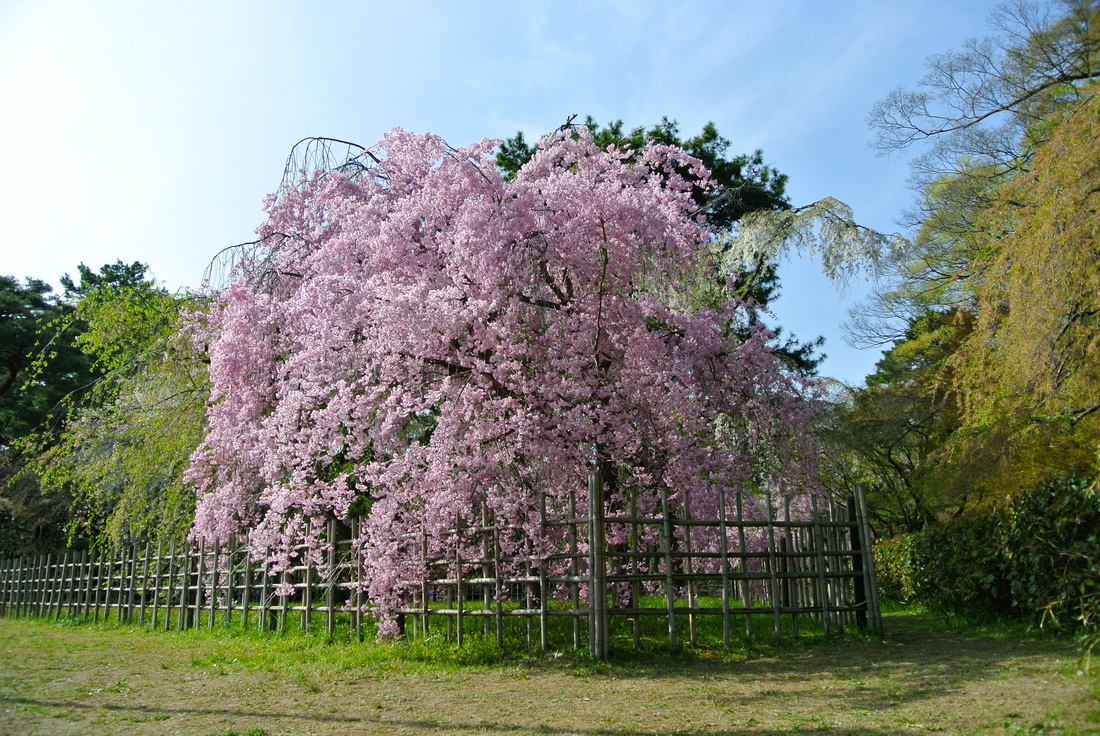 Shidarezakura (しだれ桜) | 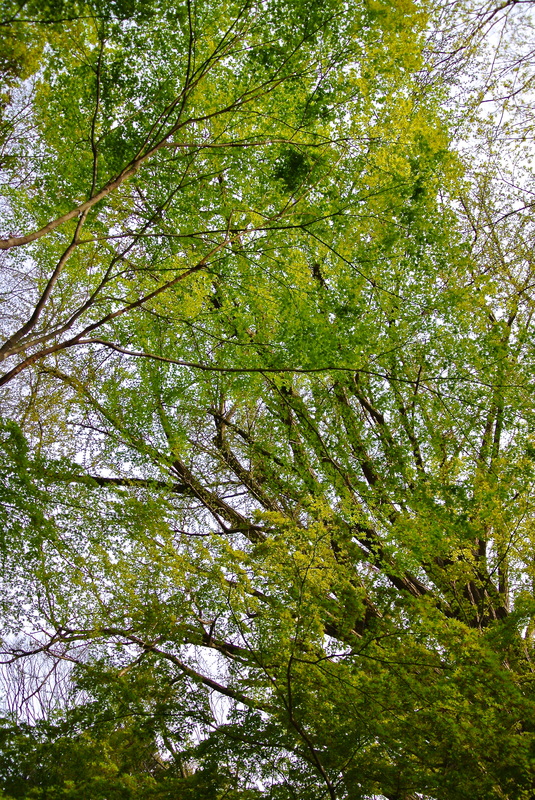 Dat green | The palace management organized a path for tourists to follow, enabling everyone to see virtually every corner and garden the palace had to offer. There were also sand gardens, garden-gardens, and beautiful paintings to satisfy any case of eye-candy hunger pangs: The thing that I enjoyed the most about Kyoto Gosho was the greenery and plant-life within and outside the palace. Because it's still very cold in Seoul, there aren't that many plants that have blossomed/regrown leaves yet, and the plants that have blossomed/regrown leaves are covered in soot and dirt (due to Seoul's horrible air quality), finally being exposed to "clean green" was refreshing.
After we finished our visit to Kyoto Gosho, we hopped into taxis and made our way to Kiyomizudera, arguably Kyoto's most famous and beautiful historical attraction.
Kiyomizudera is situated in Higashiyama-ku, Kyoto. It's fairly close to Kyoto Gosho (approximately a 15-minute train ride). It was first constructed in 778 A.D. during the Heian Period. Many buildings were also constructed in 1633 during the Tokugawa Shogunate. Kiyomizudera was named after a waterfall within the temple, called kiyomizu, literally meaning "pure water." It is said that the temple has wish-granting powers, and that buying omikugji (folded, usually scented paper charms), matching key charms, and drinking water from various waterfalls would grant ones' wish. During the Edo Period, people would "take a leap of faith" and jump off the side of the temple (which was a 13 meter drop); if the jumper survived, his or her wishes would be granted. Of the 234 jumps, 85.4% survived. I guess 200 people got their wishes granted, while the other 34 kicked the bucket... There's also a love test in Jishu Shrine (one of the shrines within Kiyomizudera), where one would close their eyes and walk from one love stone to another. If the person is able to go from one stone to the other successfully, that person would find true love.
Nonetheless, Kiyomizudera was amazing. The entire structure was constructed without the use of a single nail. Although it didn't make it past the finalist stage for claiming a spot on the 7 New Wonders of the World, Kiyomizudera is a must-go for any traveler visiting the Kansai area of Japan.
One advice that was given at the Manoa International Exchange briefing prior to departure was to, "Say yes to everything." This could be taken many ways (we all giggled at the briefing), but it perfectly applied to me when my friend Kenny, who is on exchange at Yonsei University, asked me if I wanted to go to Japan with him and his friends.
I hesitated at first because I knew the costs would be extremely high in addition to the difficulties of booking hotels/hostels and flights during Osaka/Kyoto's Cherry Blossom season. But in the end, I said yes; price wasn't a big enough opportunity cost to make me refuse. In addition, although I've been to Tokyo/Kanagawa/Shizuoka many times (East Japan), I've never been to Osaka nor Kyoto (West Japan).
I booked with Peach Airlines, a Japanese low-cost airline company. The flight was a bit expensive (around $280; price was high because demand was high due to it being Sakura Season), but the flight and service were great. | | 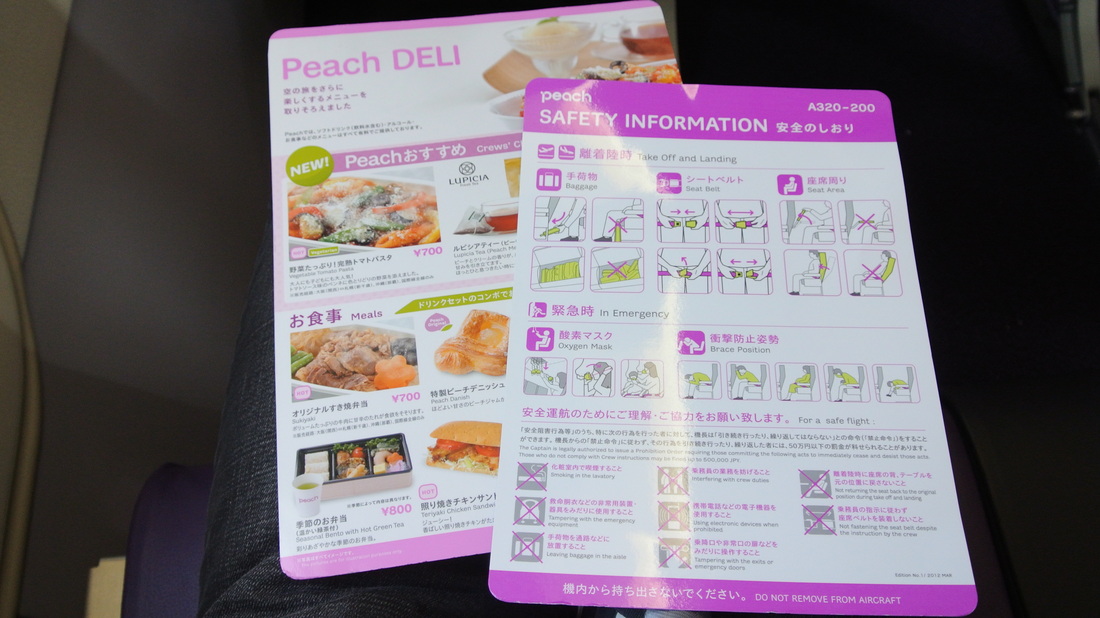 ←Is she trying to hug me or something? | I arrived at Kansai International Airport at around 6:00pm on April 4. The first thing I noticed was how warm it was in comparison to Seoul (15-18 degrees centigrade vs. 7-9 degrees centigrade). It felt great walking around in a T-shirt.
The hotel, New Oriental Hotel, was located in Awaza, Osaka. The commute to the hotel was very simple (but expensive): I took the Nankai Rapi-t Train from KIX to Namba station in Southern Osaka (1100JPY), then the Sennichimae line from Namba to Awaza (200JPY); commute time was about 1 hour and 20 minutes.
The hotel was relatively cheap (4500JPY per night), but had great service. It was conveniently located by the main train/shopping hubs (Shinsaibashi, Namba, and Honmachi), so traveling to different sites was very convenient. Thanks to Hitomi (Osaka native on exchange in Korea) for booking it for us!
| The first full day (4/5) was spent in Kyoto, the former capital of Japan and home to many of Japan's most beautiful historical sites and temples. The air was warm and the Sakura were blooming everywhere: | 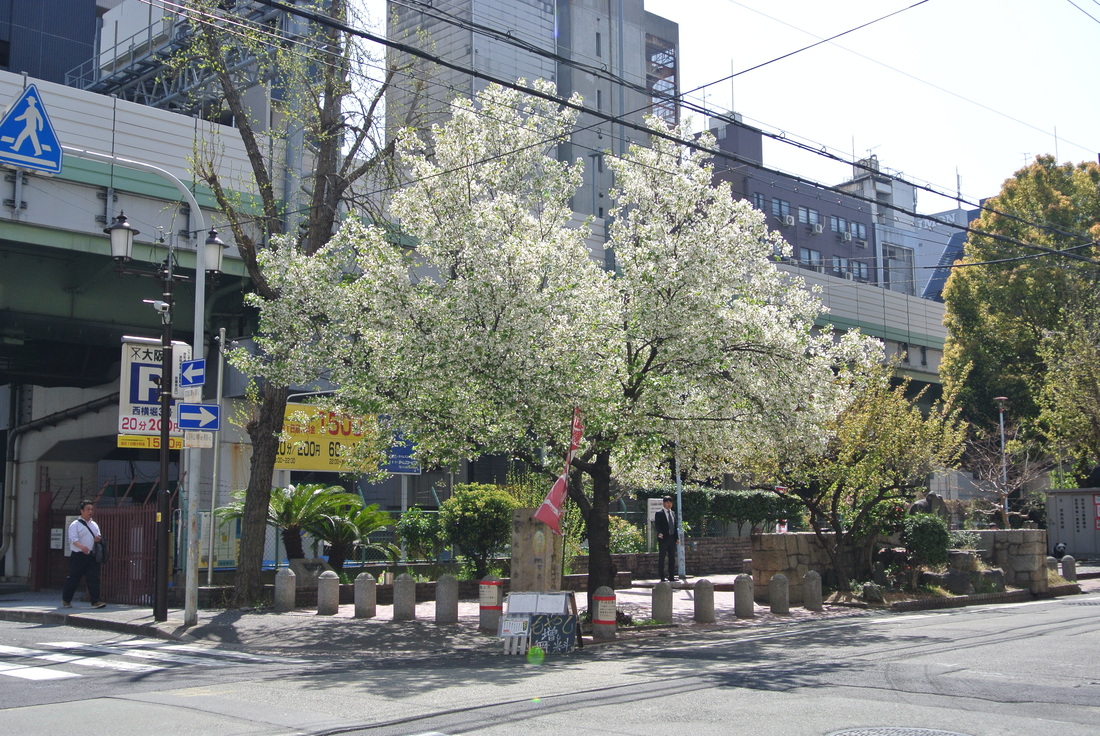 It's been a while since the last time I saw Sakura...感動しました。 | Our first site in Kyoto was Fushimi Inari Shrine, the head shrine of the Shinto deity Inari, in Southern Kyoto. Many Japanese merchants and companies donated torii (traditional Japanese gates into Shinto shrines) to the temple, which was founded in 711 A.D. It is said that there are 1000 of these torii lining the path up the mountain to the shrine. Several statues of kitsune (or foxes, traditionally thought of as messengers) with keys in their mouths are found in the shrine. 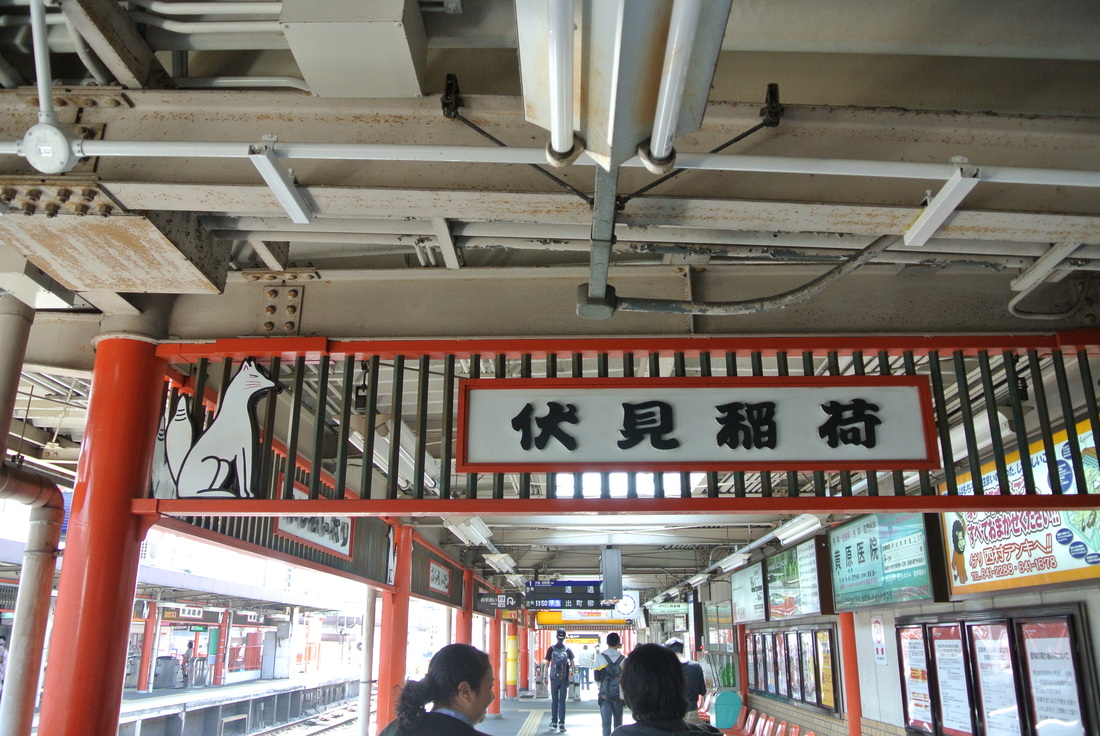 Fushimi Inari Station | 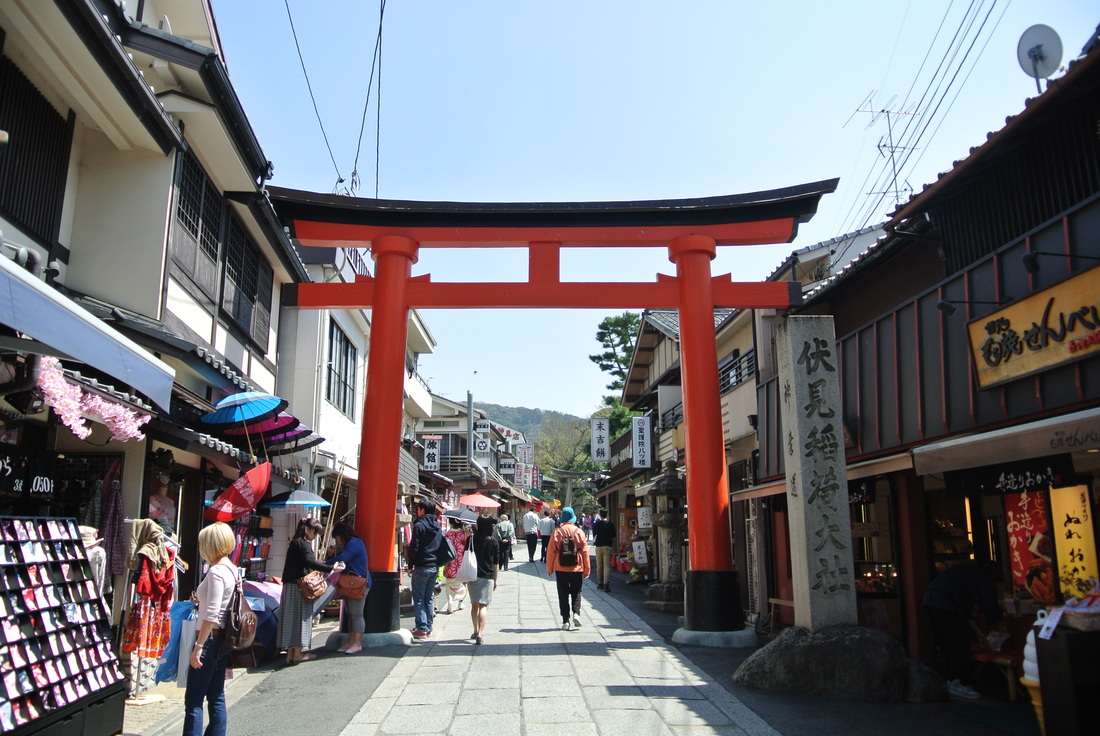 Entrance of the path to the Shrine | 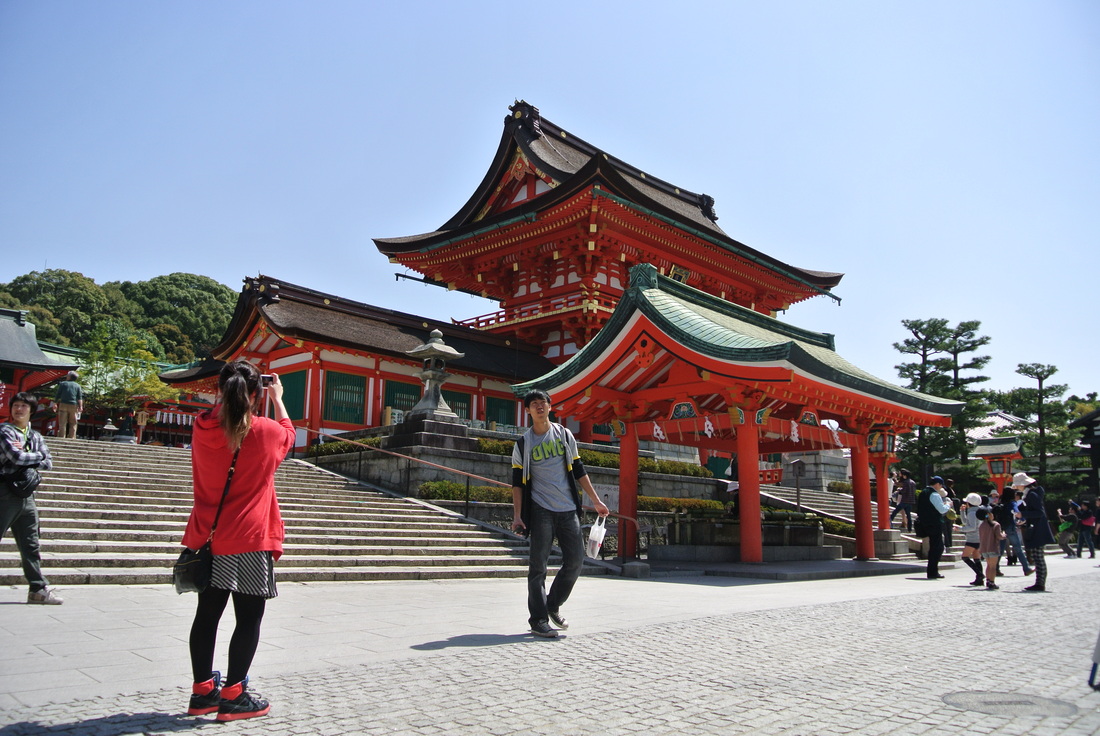 Entrance of Fushimi Inari Shrine 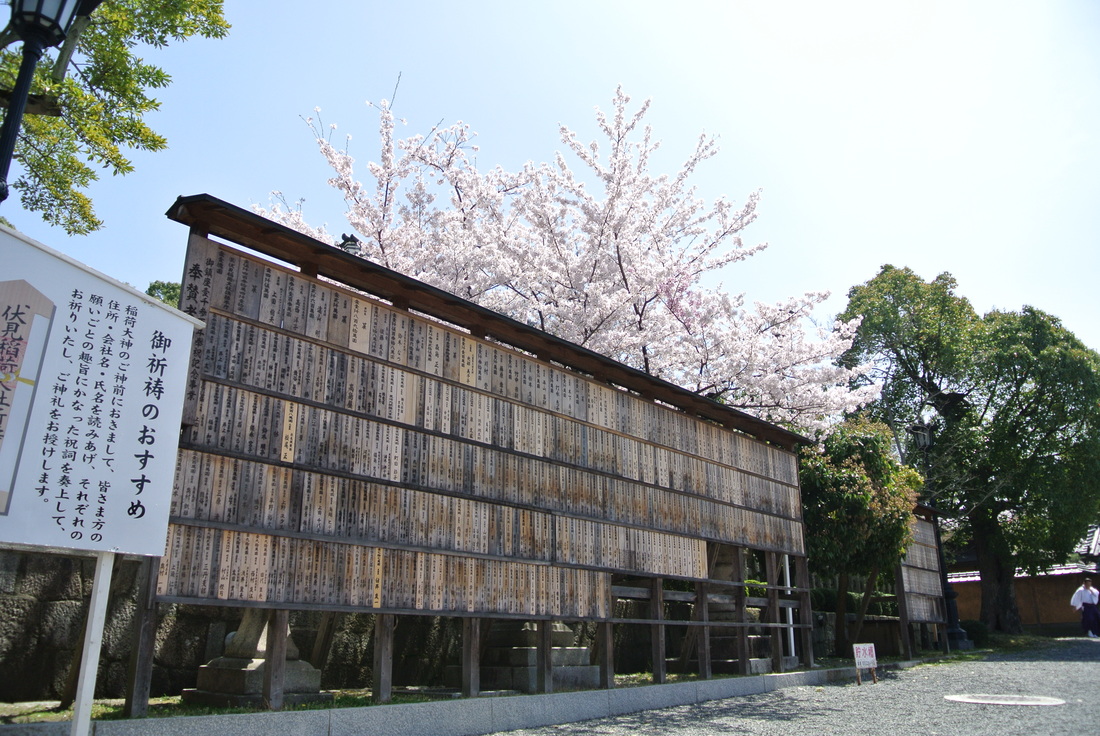 The names of the donors who provided funds for the temple | 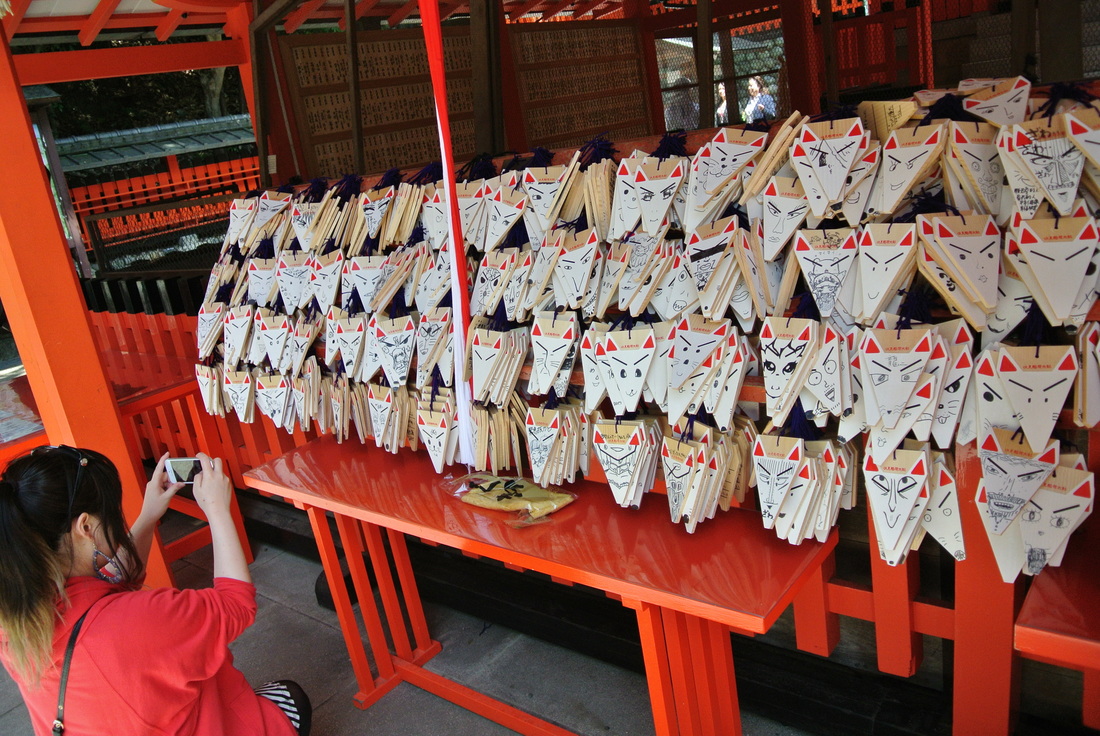 Oh so foxy | 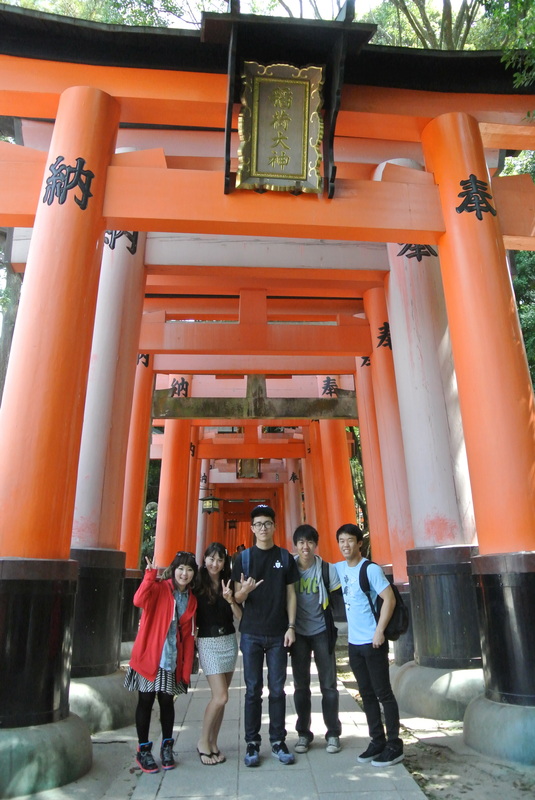 In front of the first Torii There were many tsukabai (hand-washing basins) within the temple, in which you could wash your hands, face, and take a sip of water. I kid you not, that was some of the most delicious water I've tasted; crispness with a tiny hint of bamboo. | 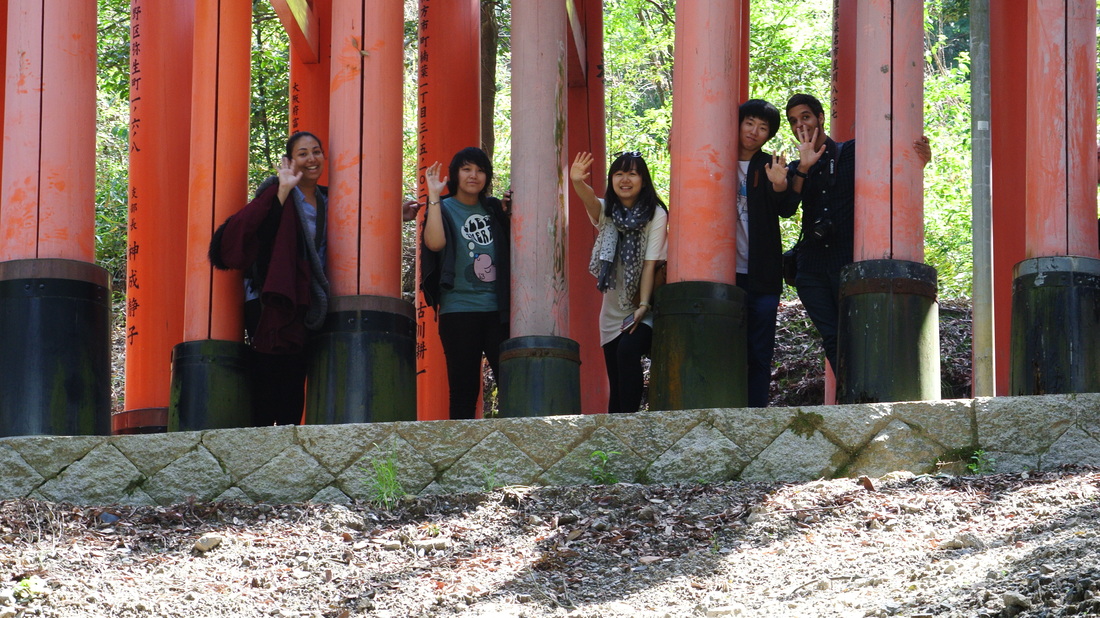 Say "HI" guys! 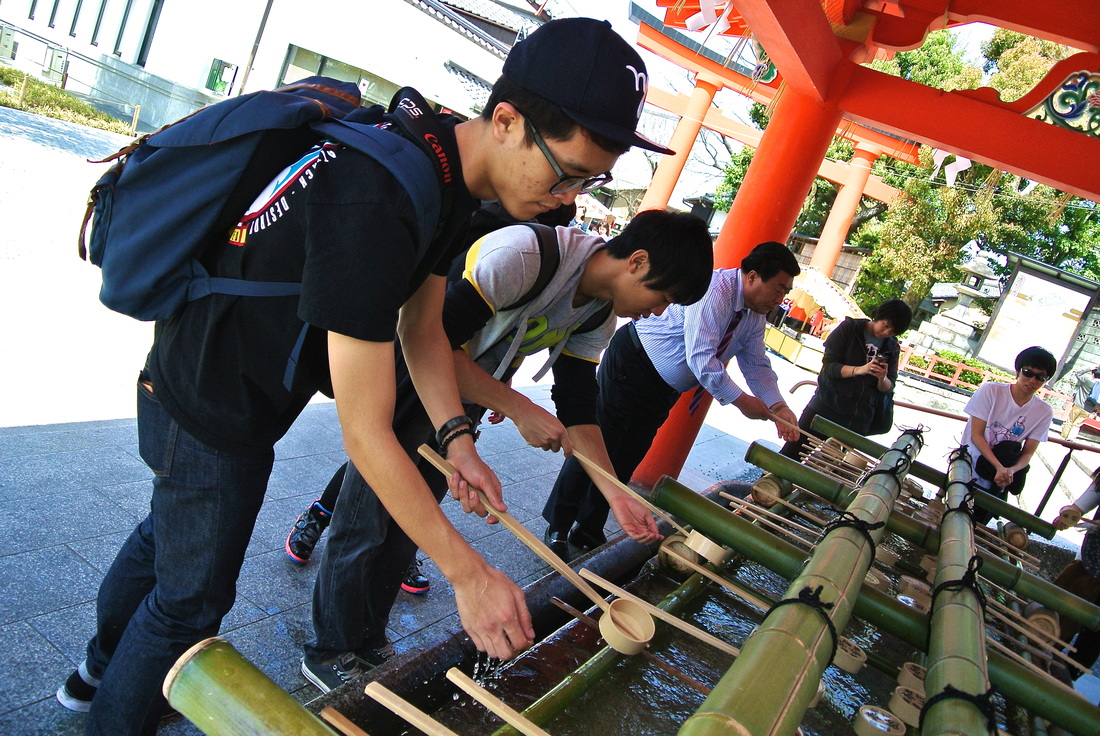 Washing hands the traditional way from a tsukabai | There were many gift shops around the area, selling goods ranging from mochi to hand-carved chopsticks with your name carved on it. We decided to eat at a traditional Japanese restaurant. My friends ate Oyakodonburi, Soba, and Tempura-don. I, on the other hand, ate Tempura Udon. So delicious: 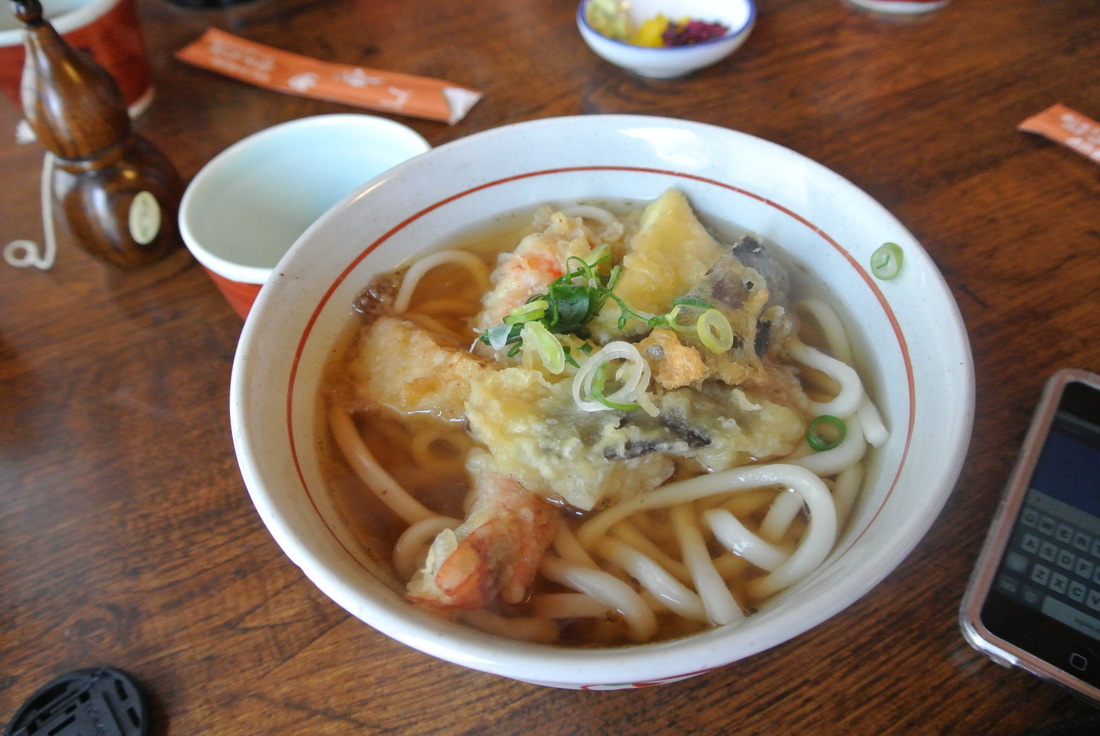 Tempura Udon | 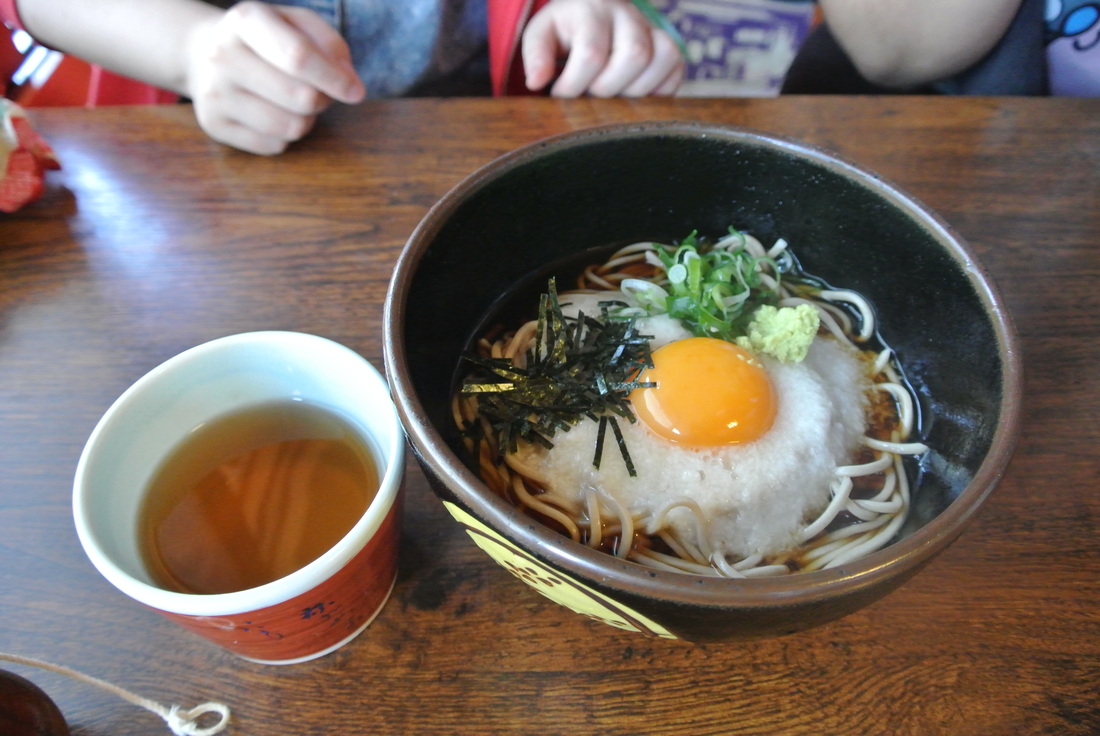 Soba | 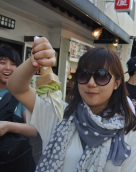 We topped our delicious lunch by enjoying tofu-based soft cream. It was soft and fluffy, but was firm enough to hold itself in the cone, even when flipped upside down. We all had the osusume (suggested) flavor: vanilla and green tea. The dessert experience was extra-enjoyable as the temperature was warm, the sun was bright, the atmosphere was relaxing, and the skies were blue as ever.
By the way, this was the first out of three sites that we visited in Kyoto on the first day. So stay tuned for more (Kyoto Imperial Palace and Kiyomizudera), as well as Saturday's adventures (Osaka Castle and South Osaka's primary shopping districts Namba and Shinsaibashi)!
Yay for Kimono lady:
|





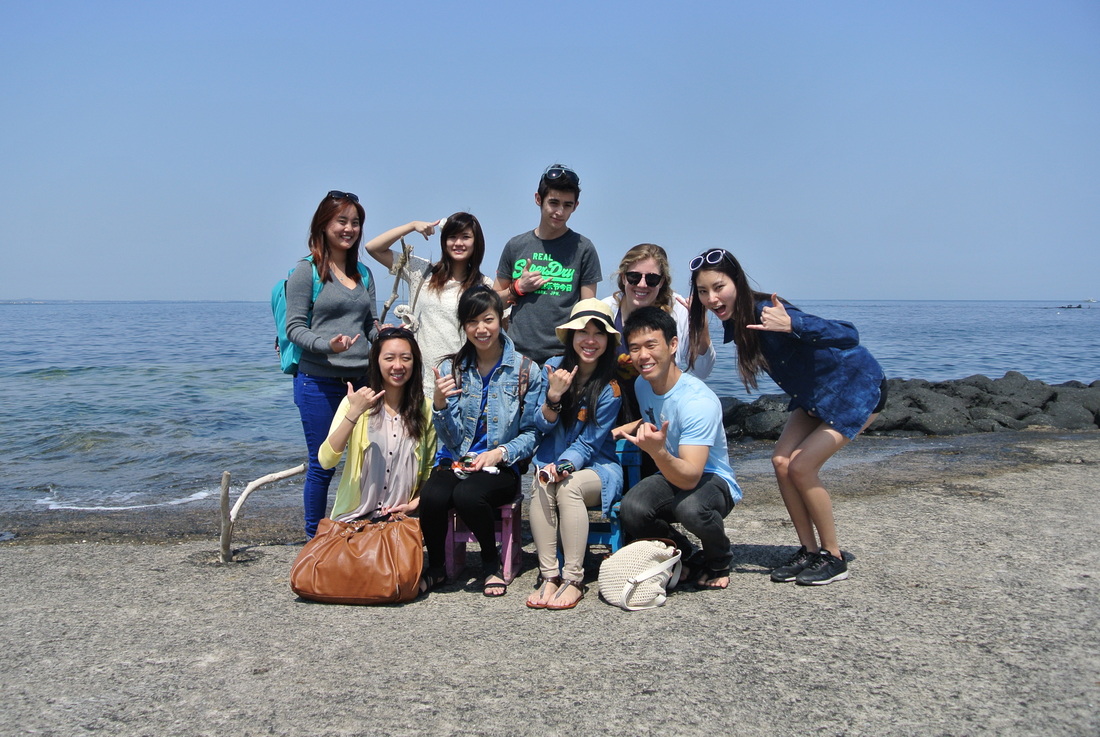

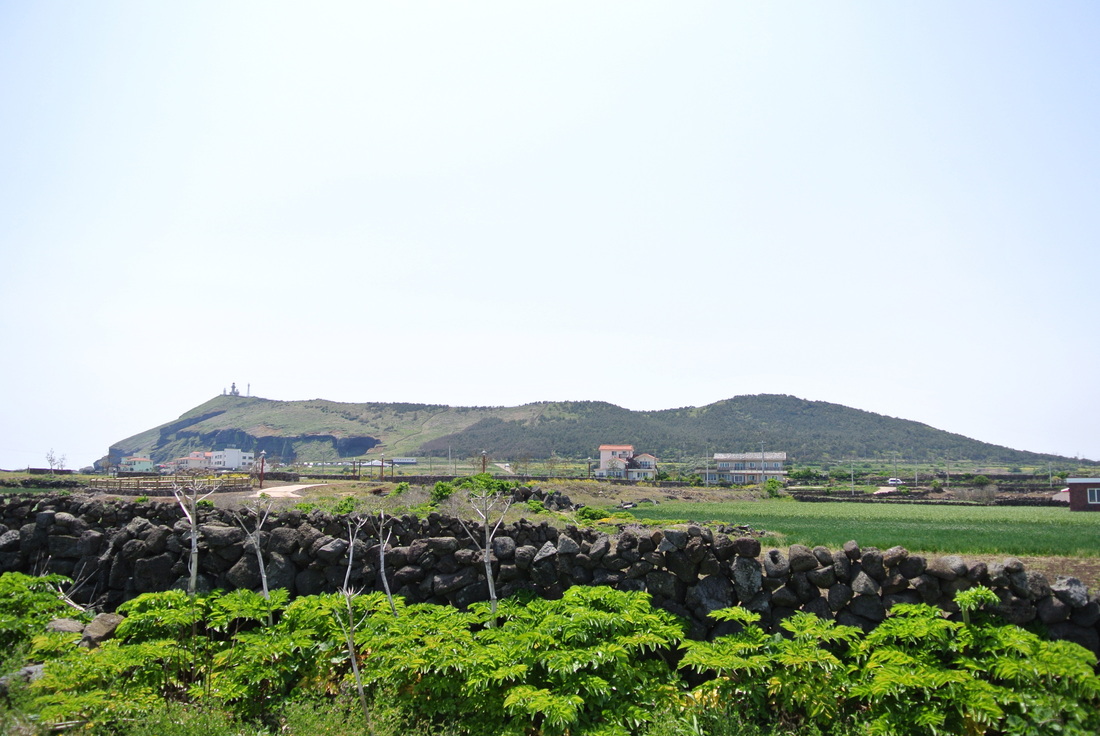
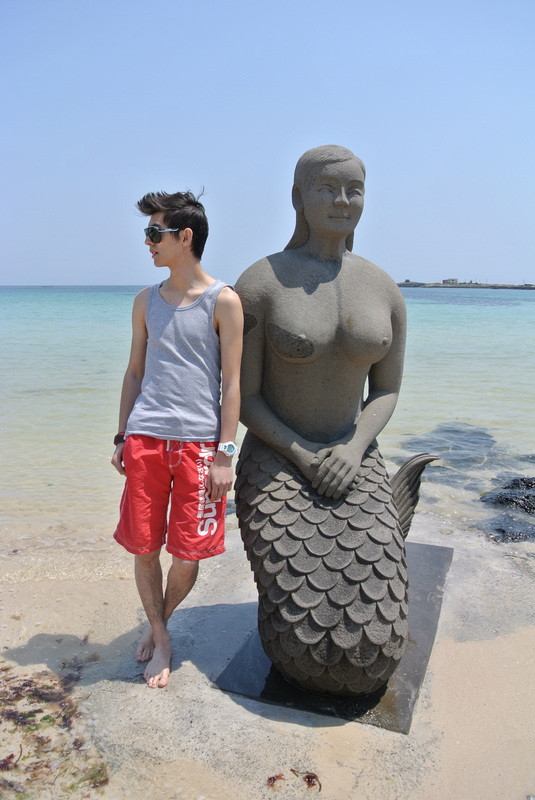
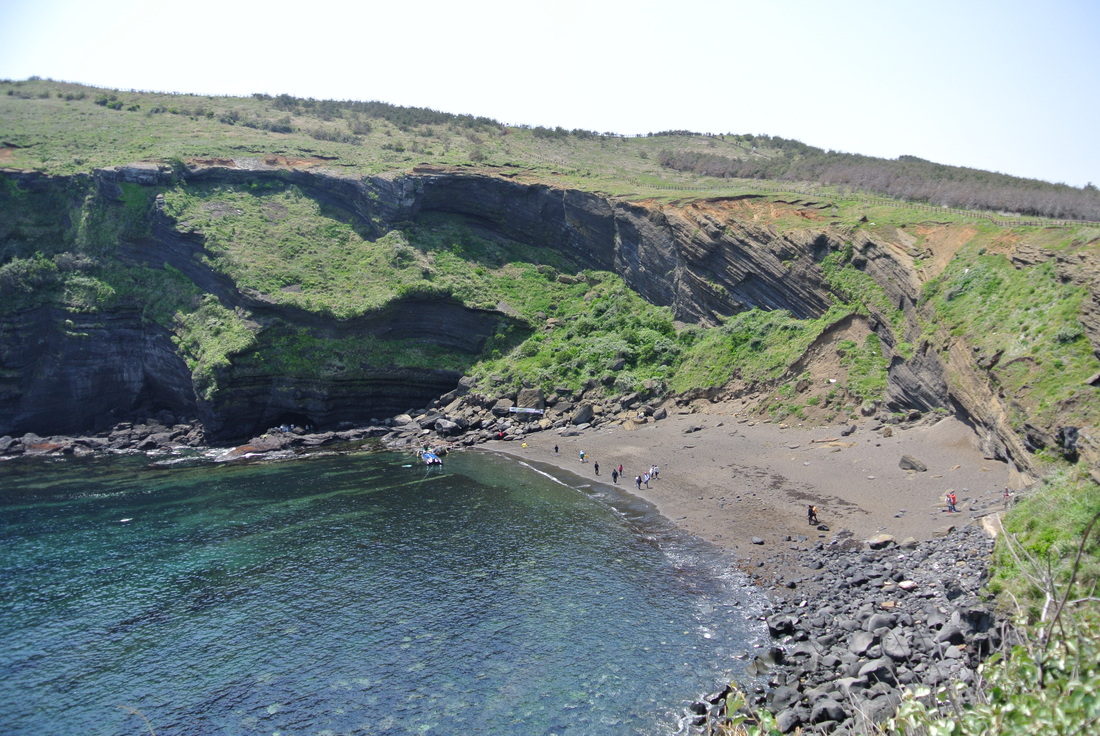
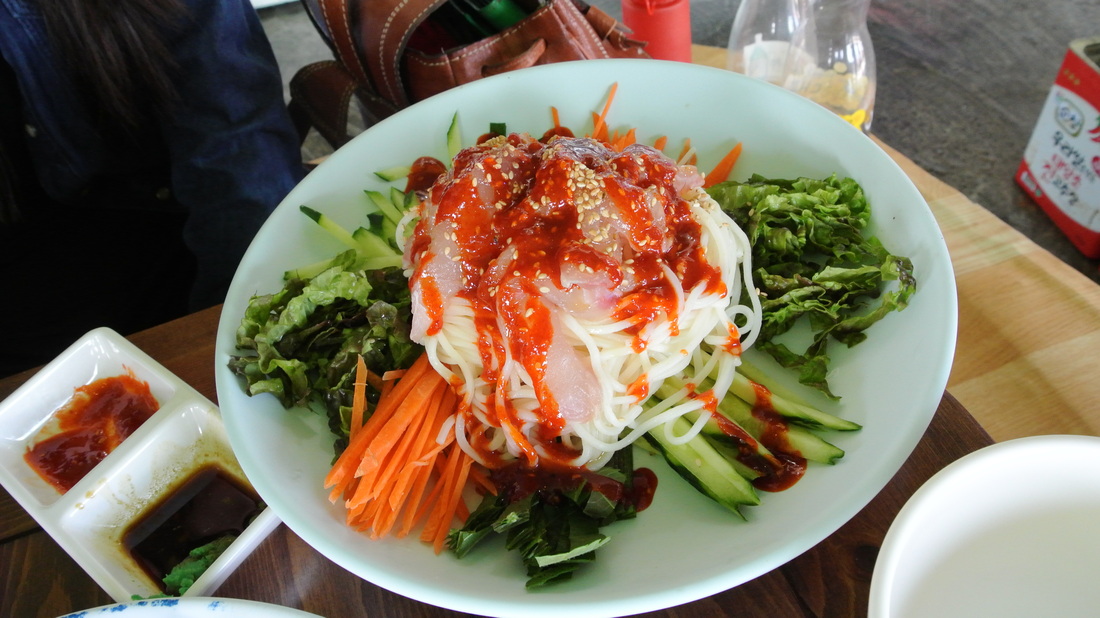
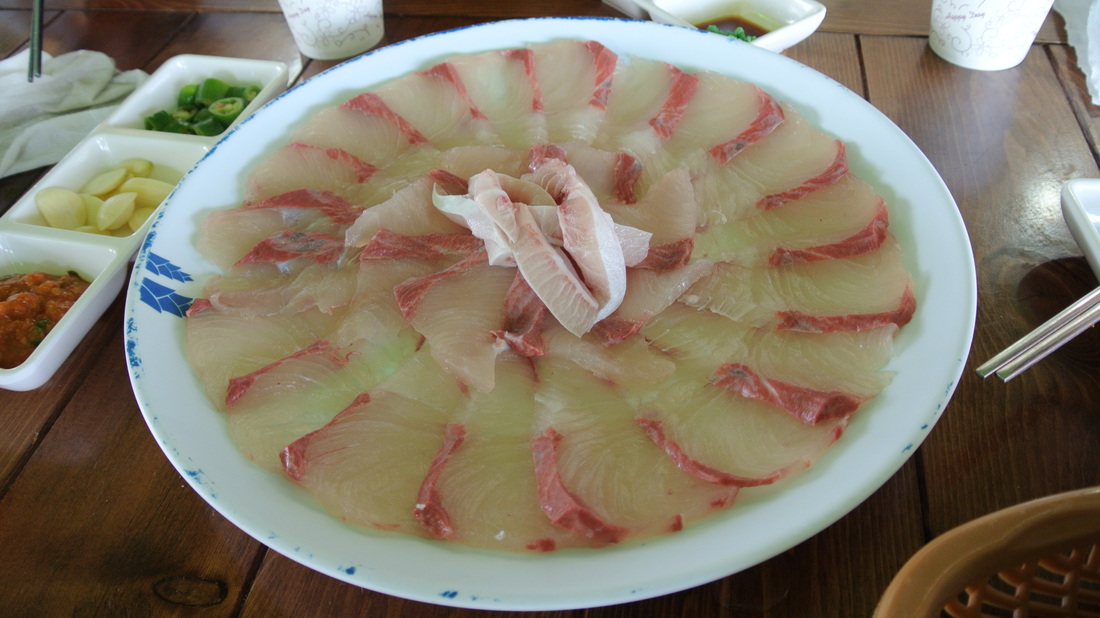
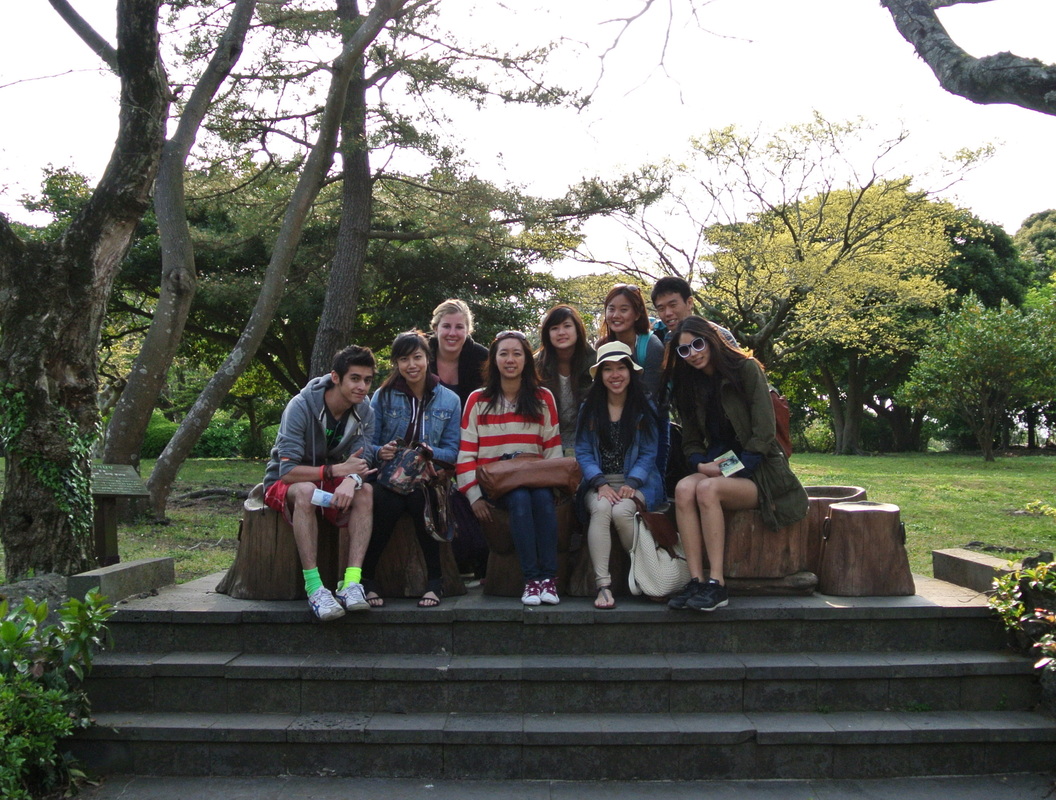





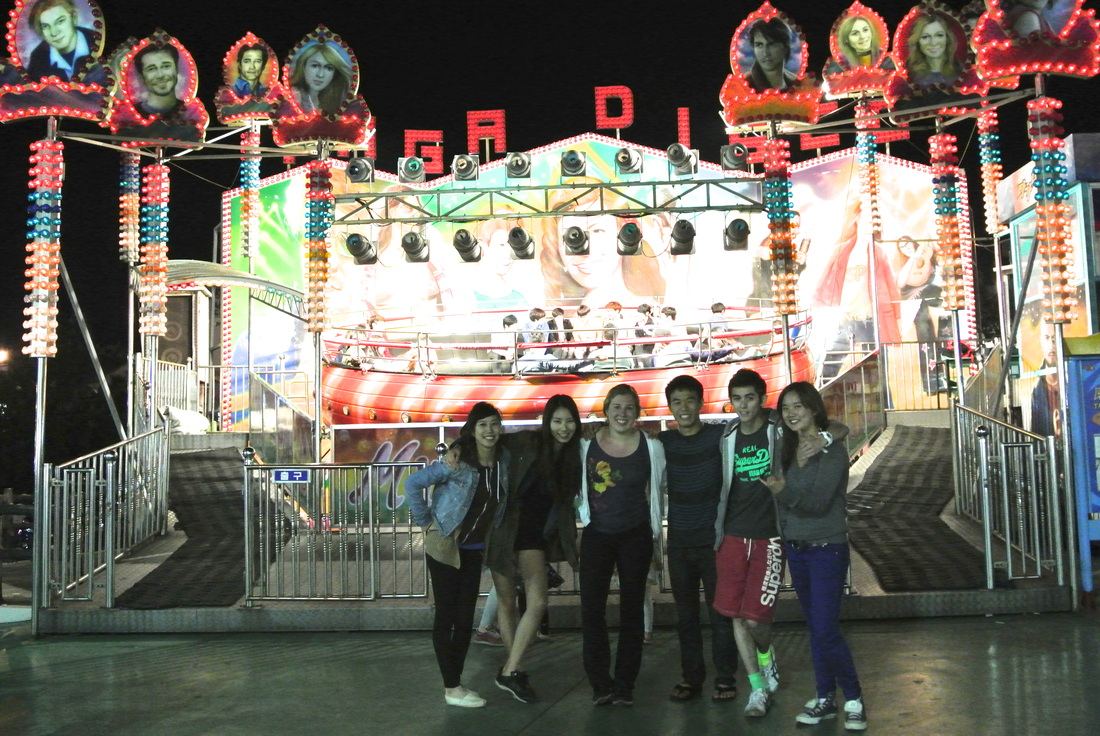
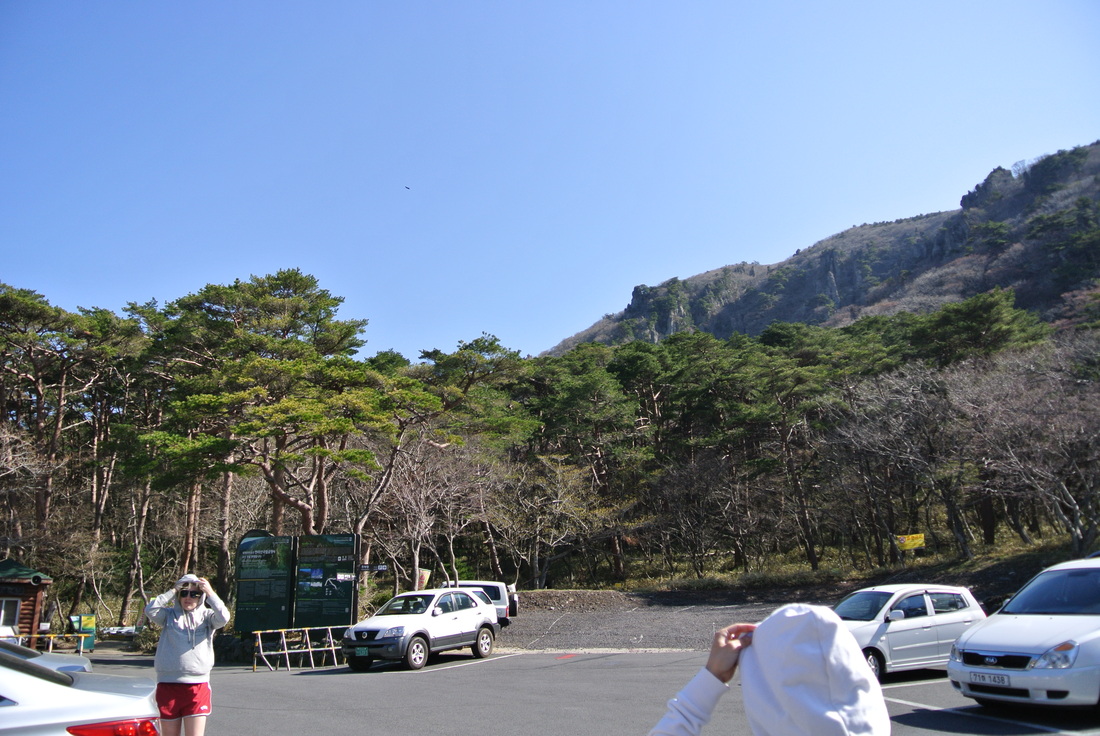











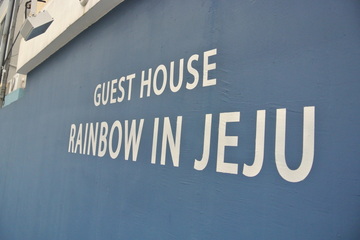

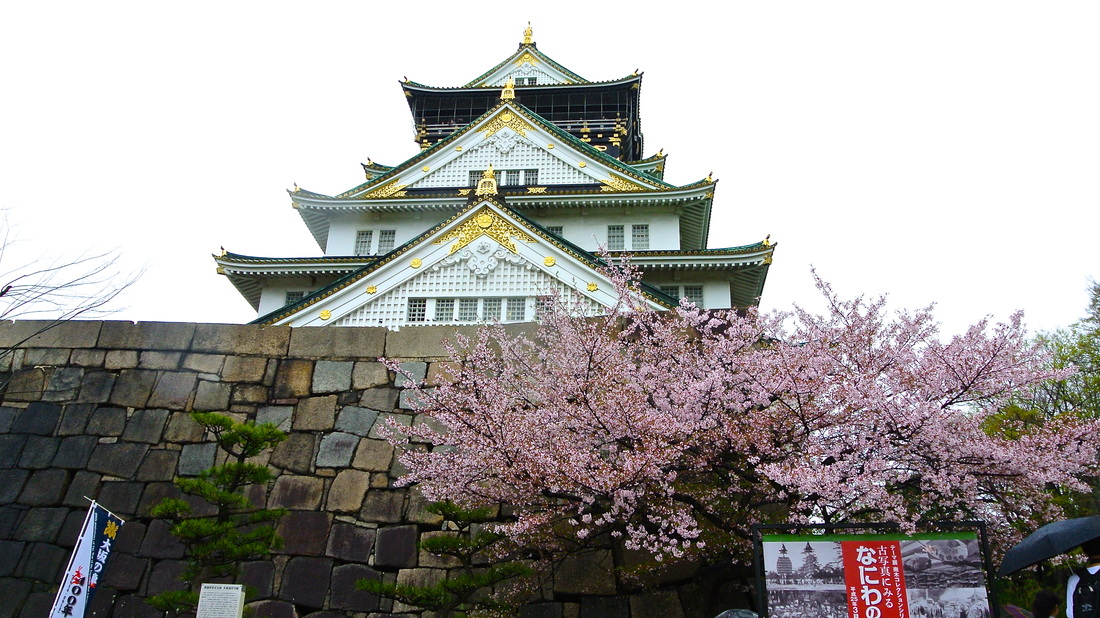















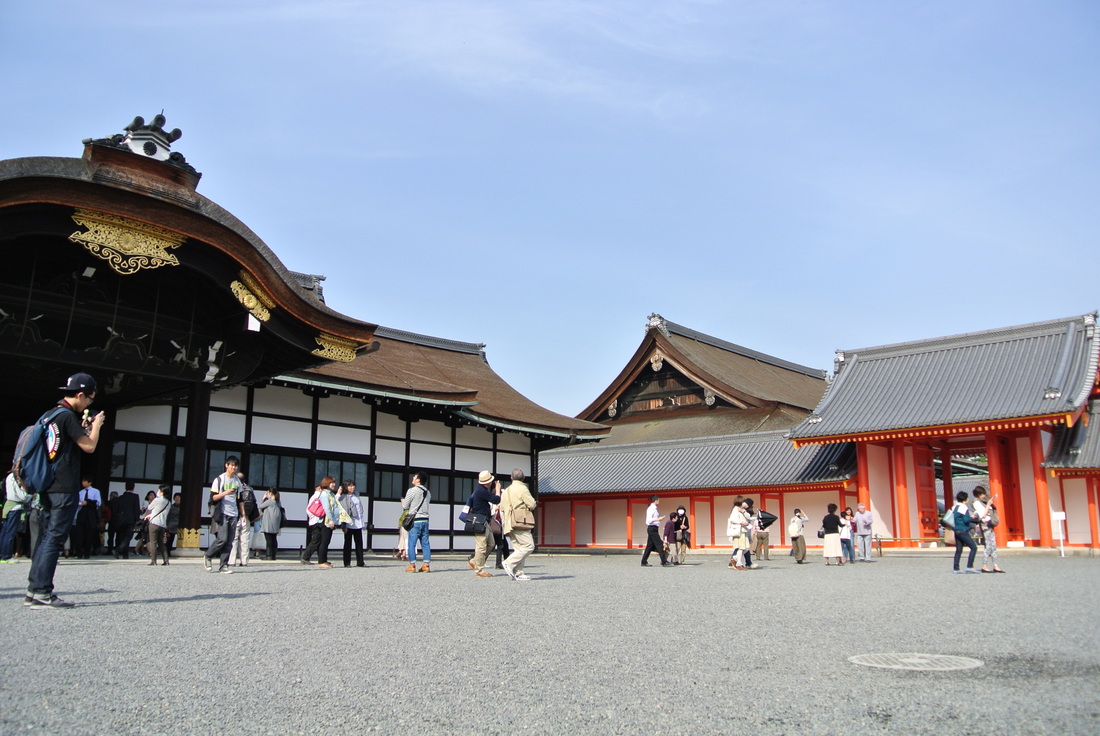
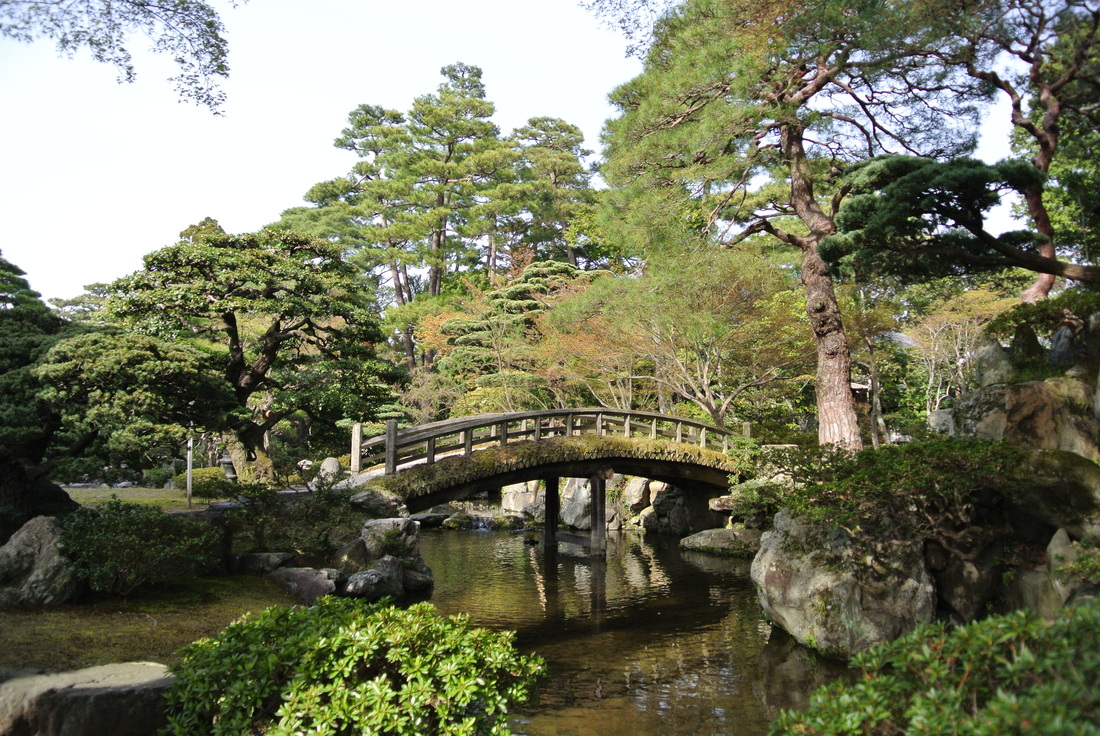
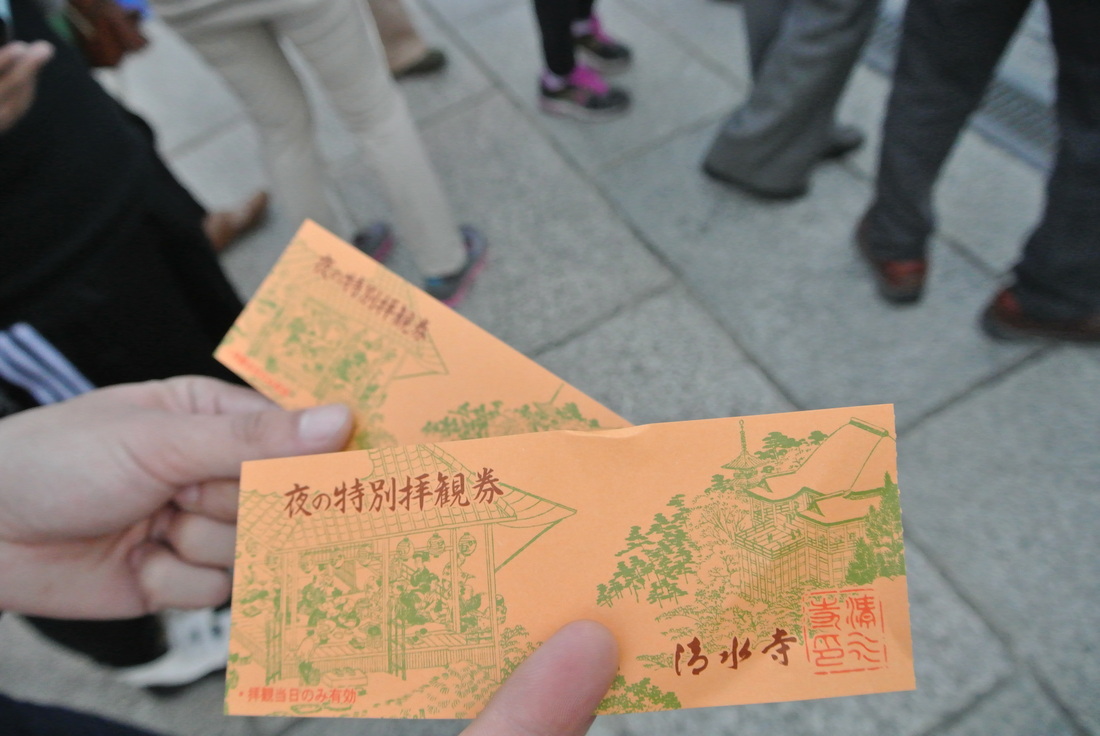
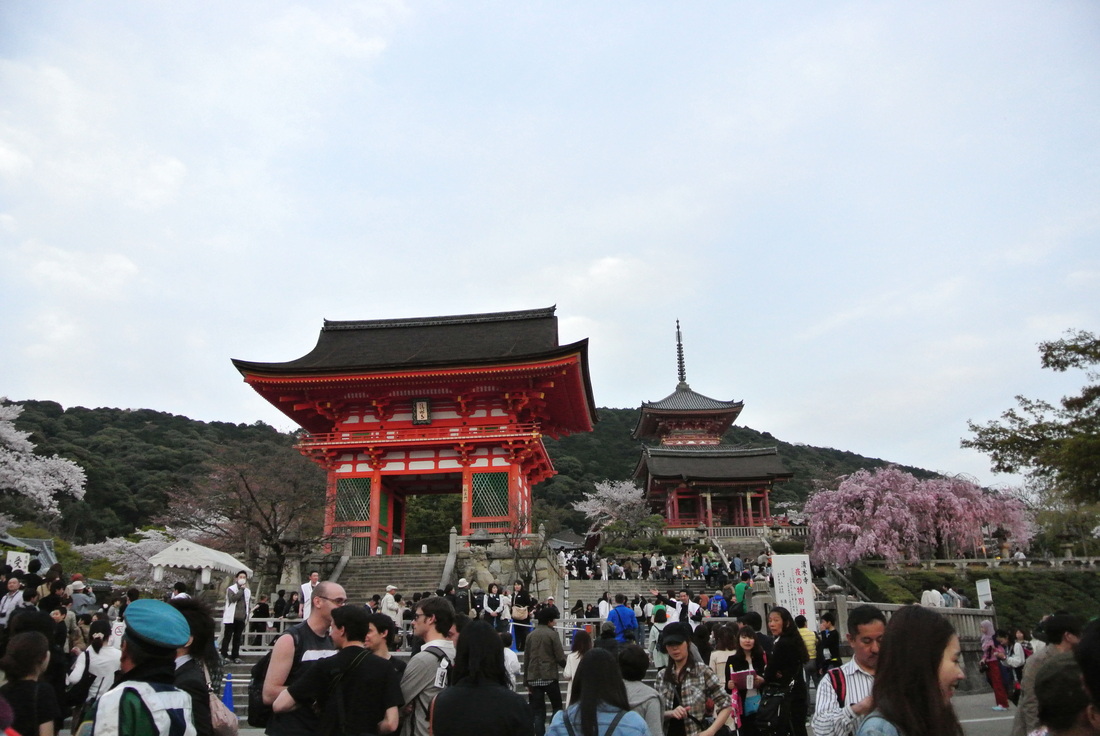
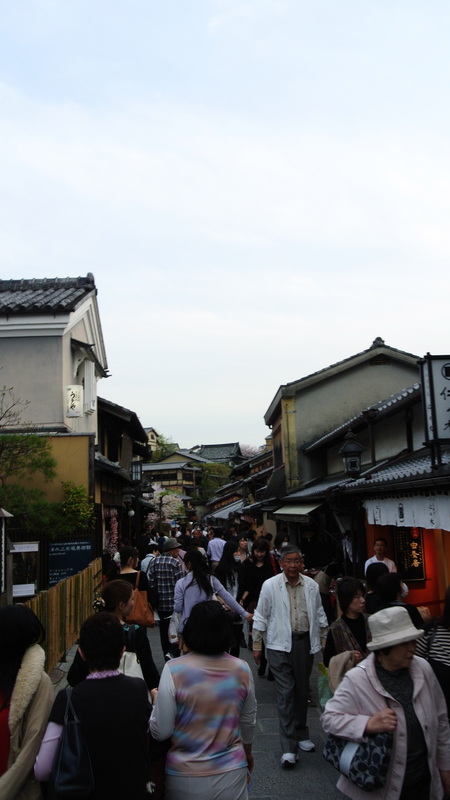
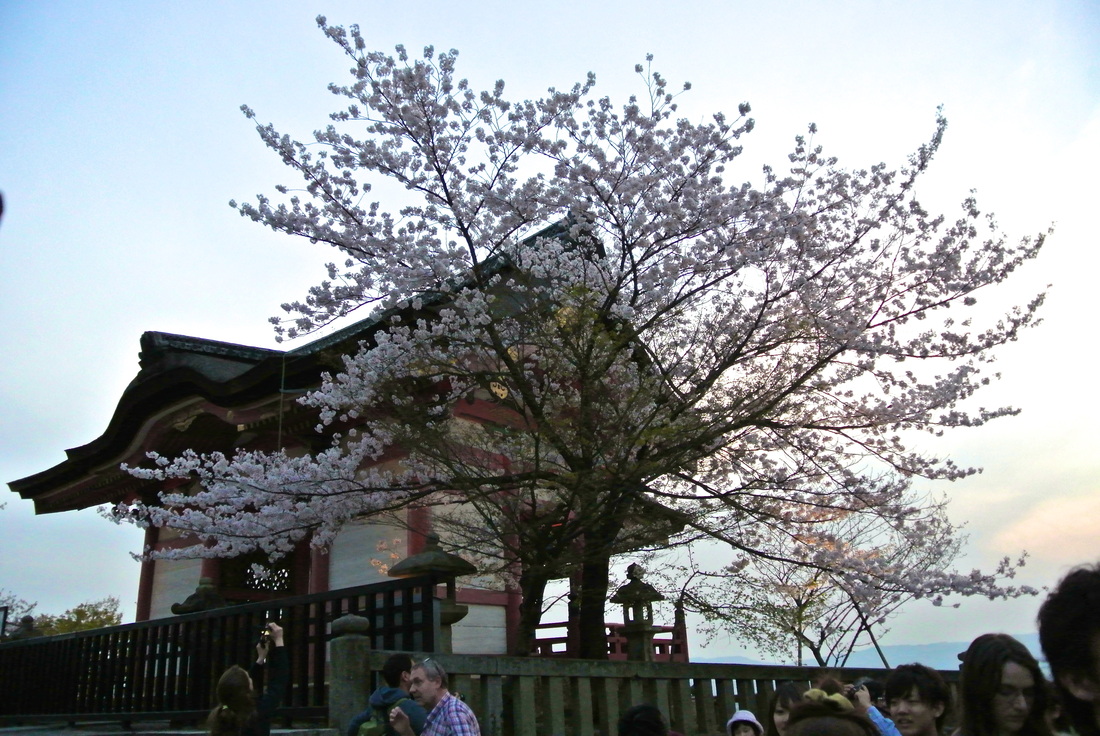
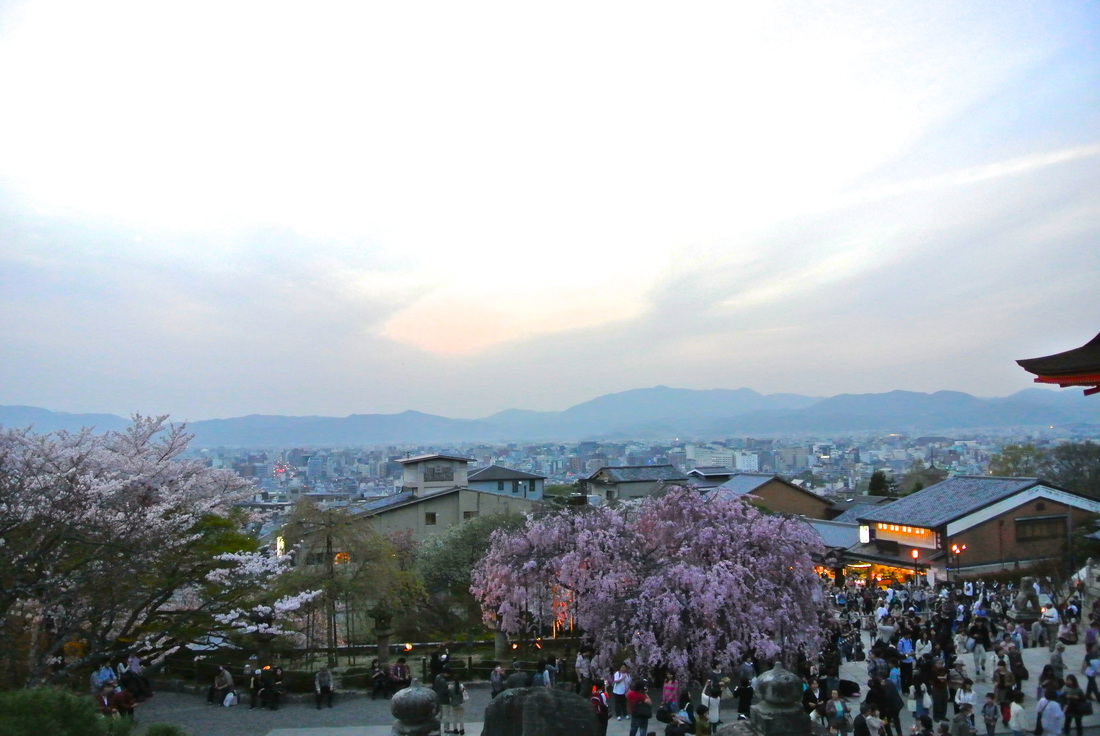
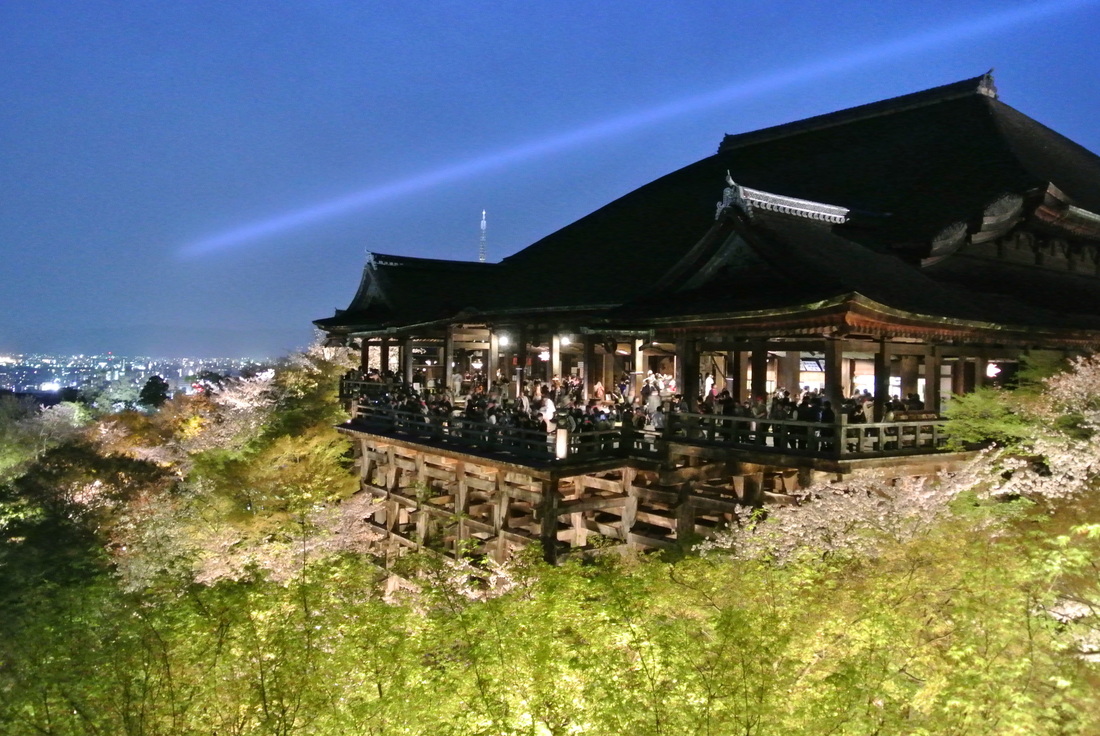
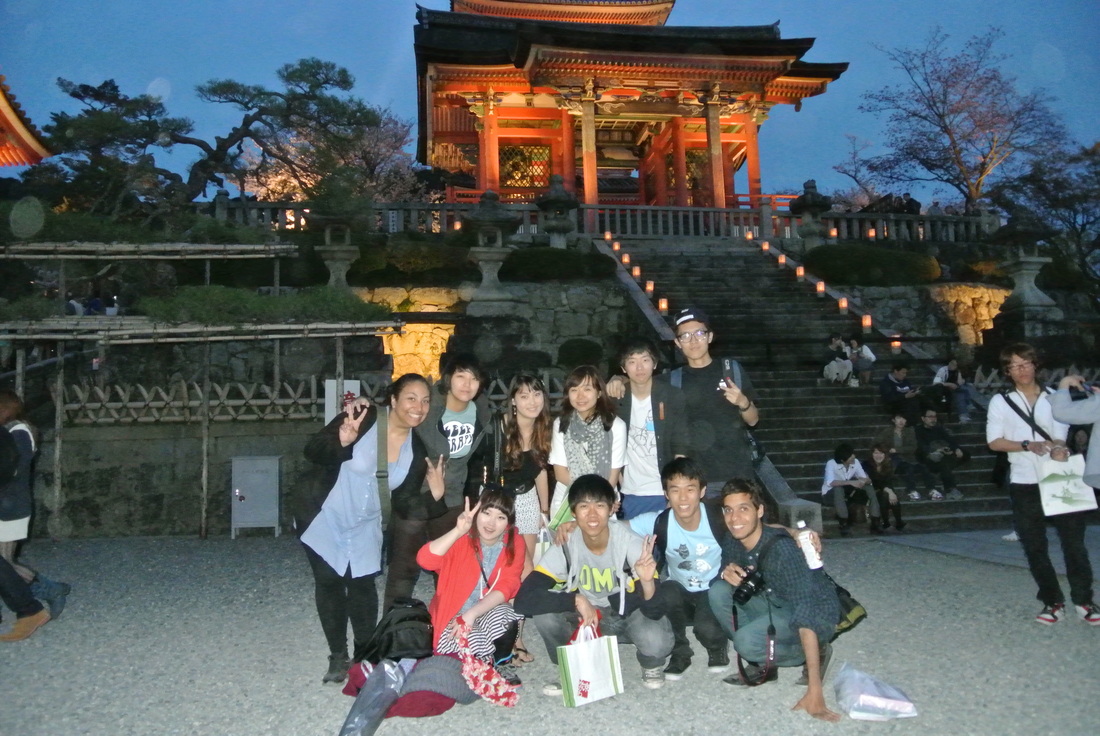
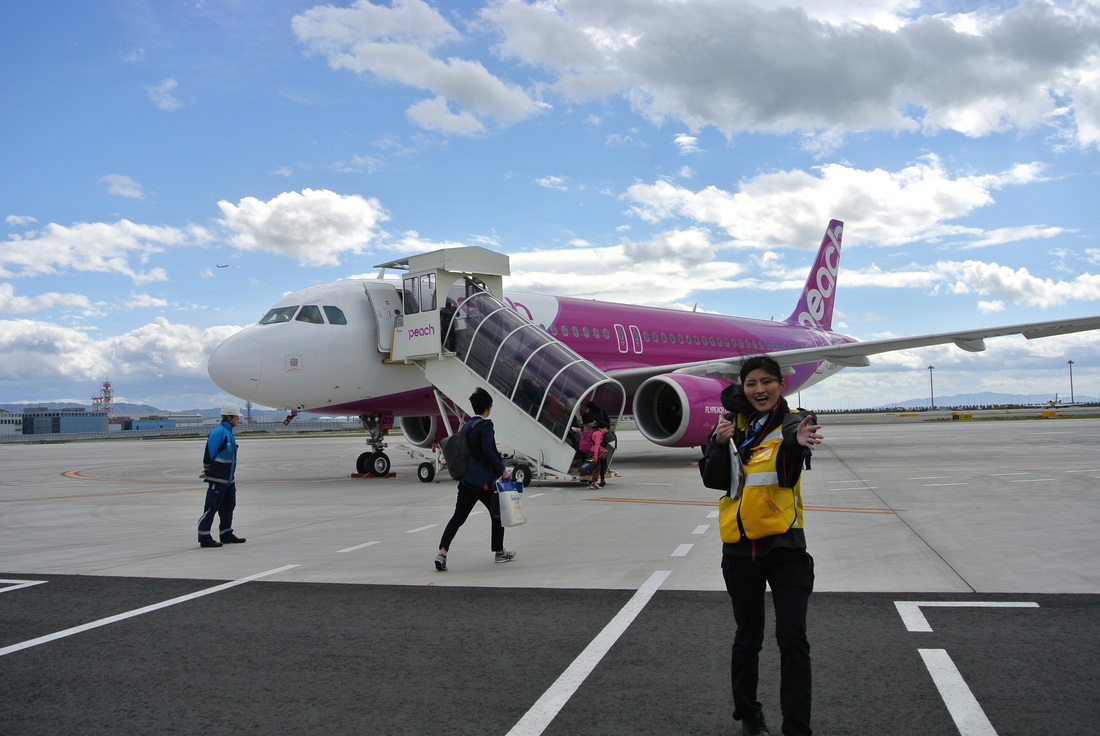

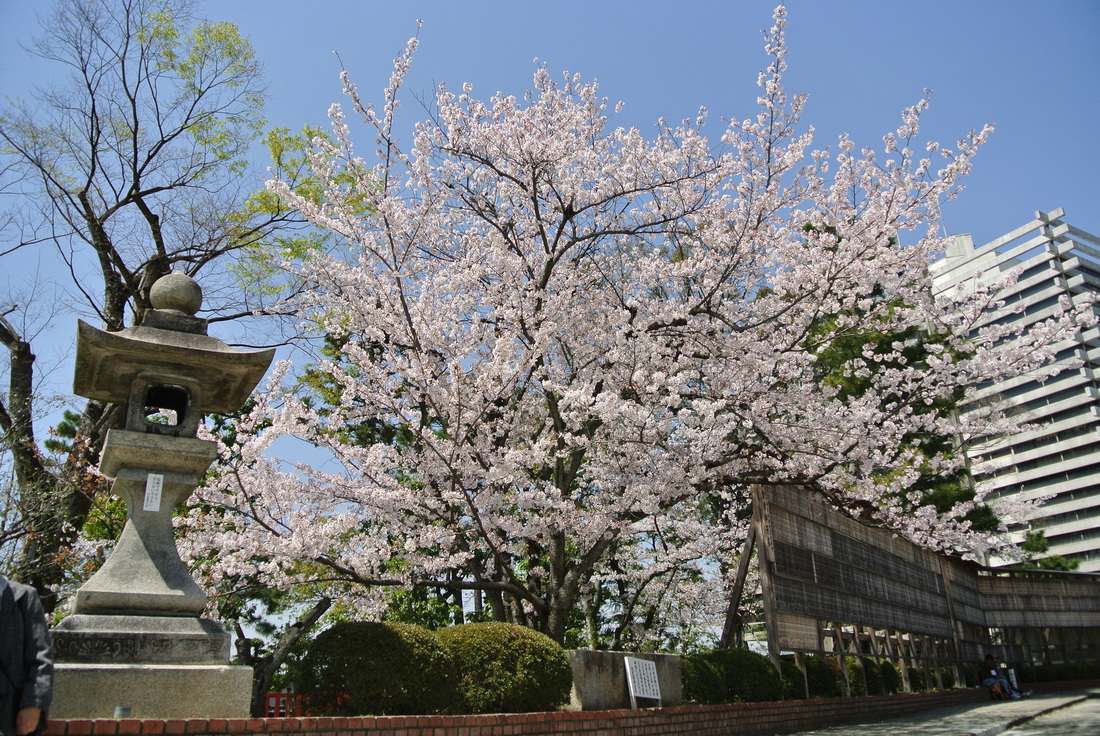












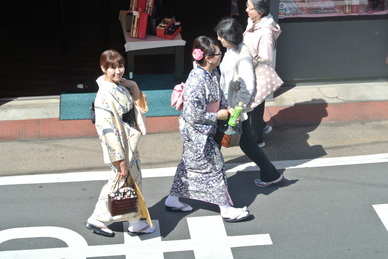
 RSS Feed
RSS Feed

